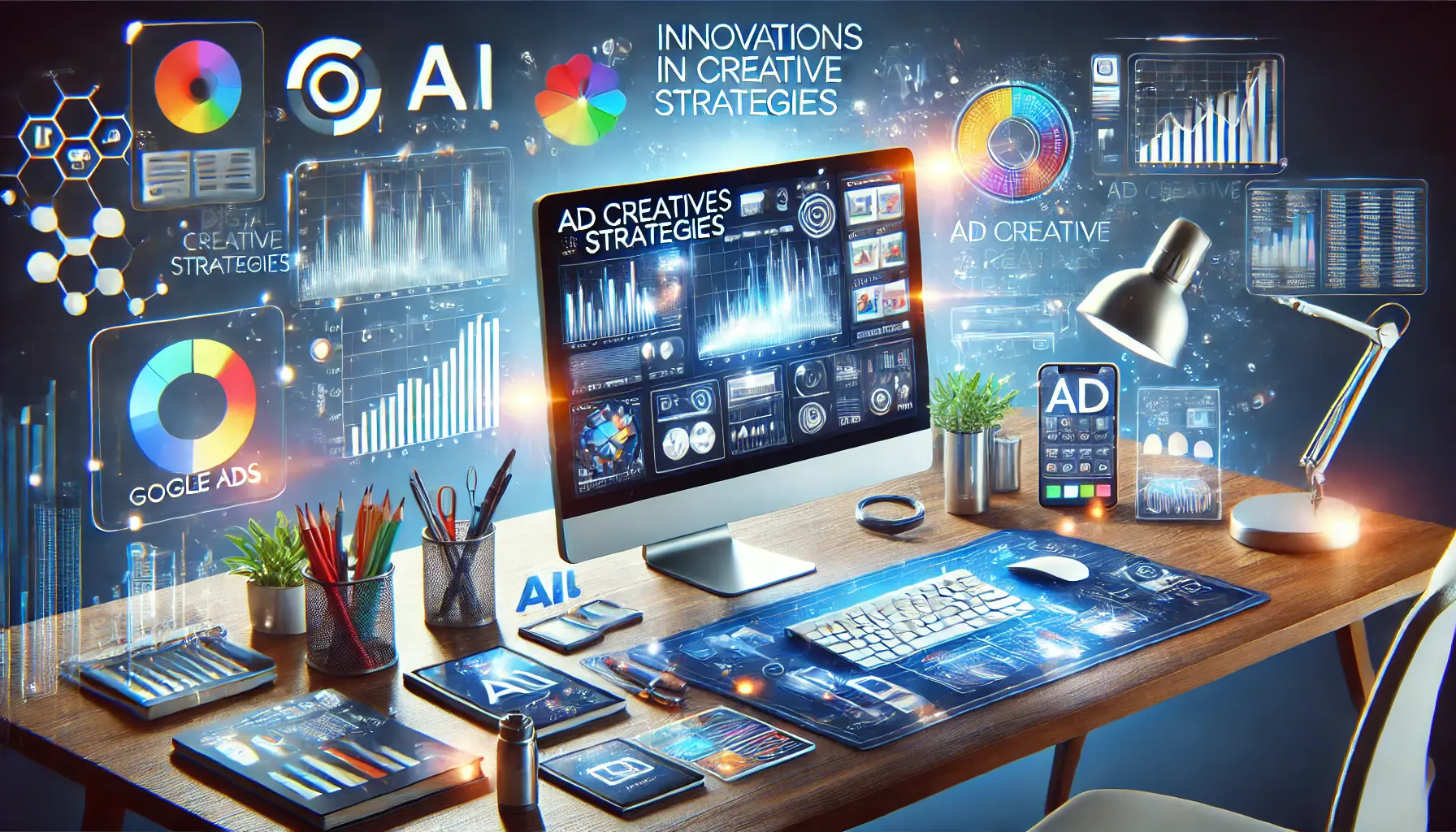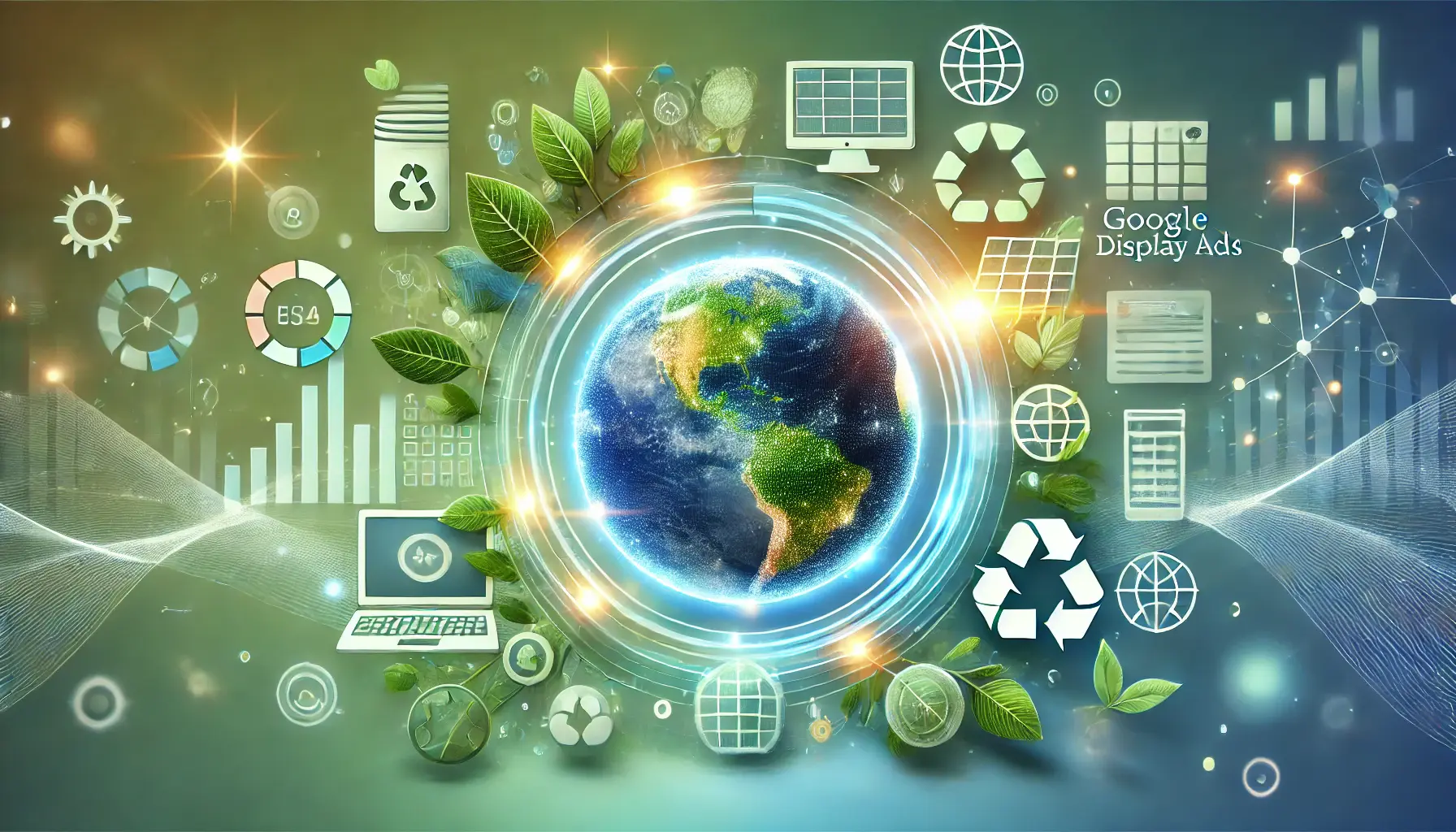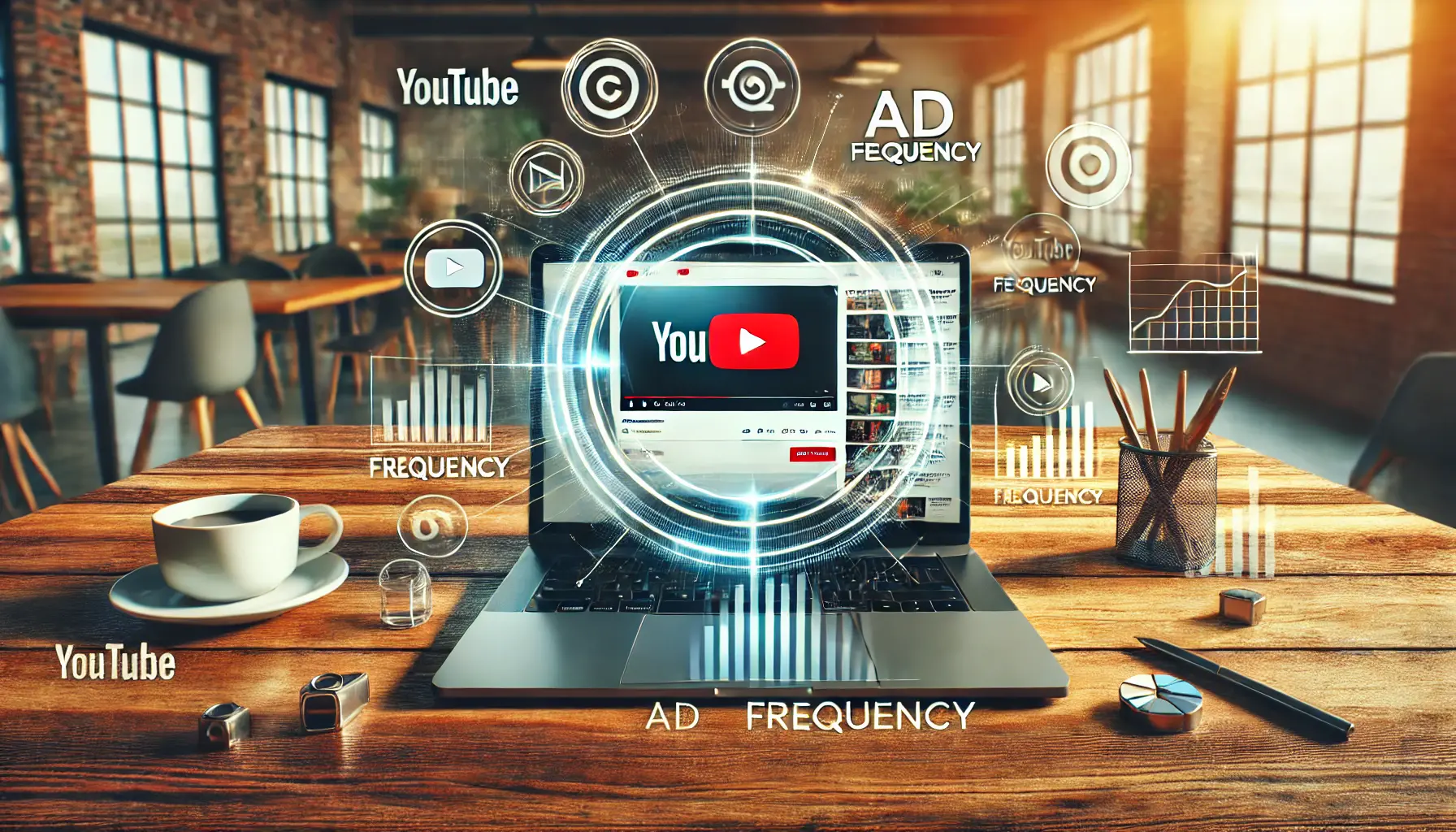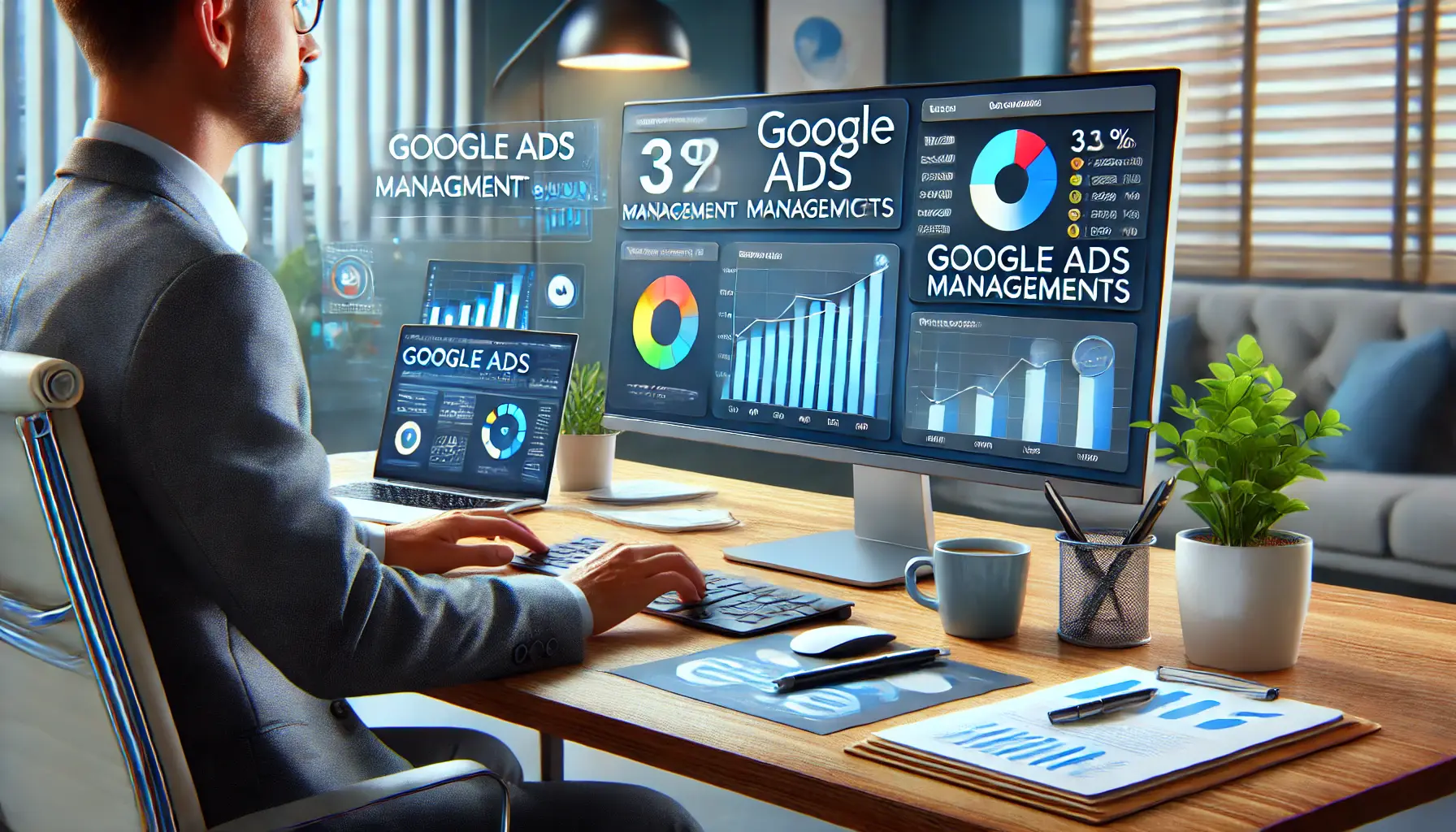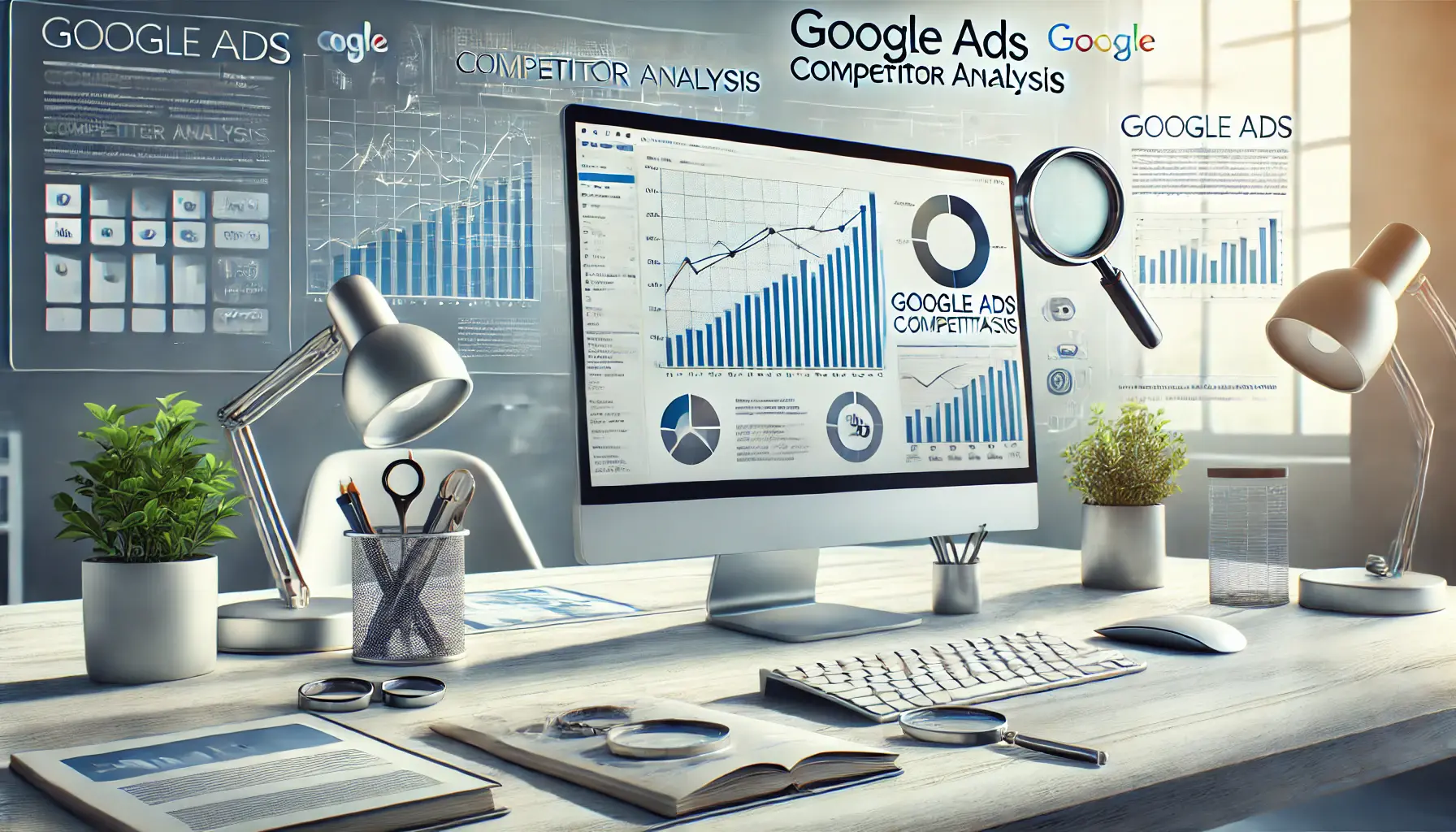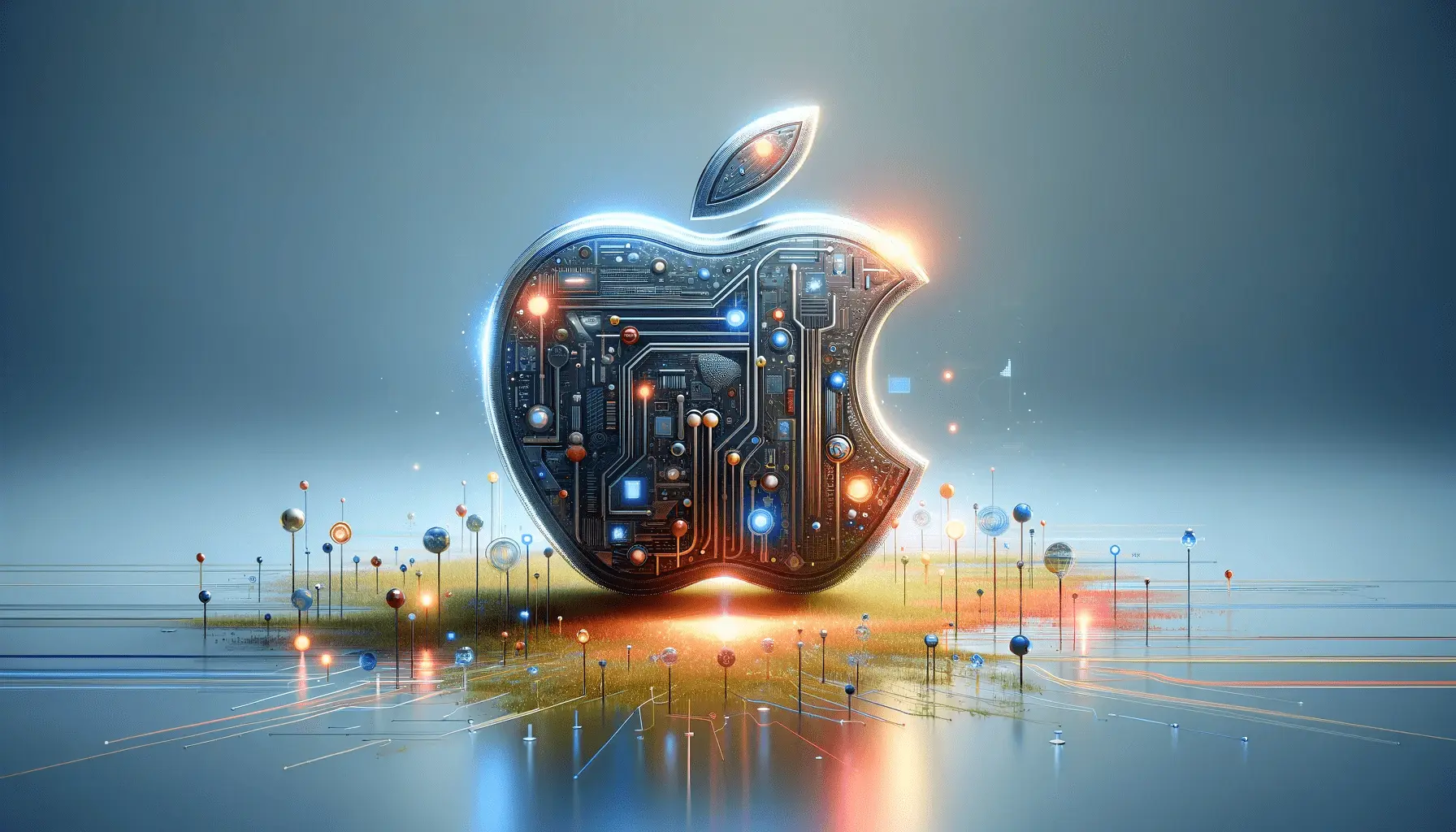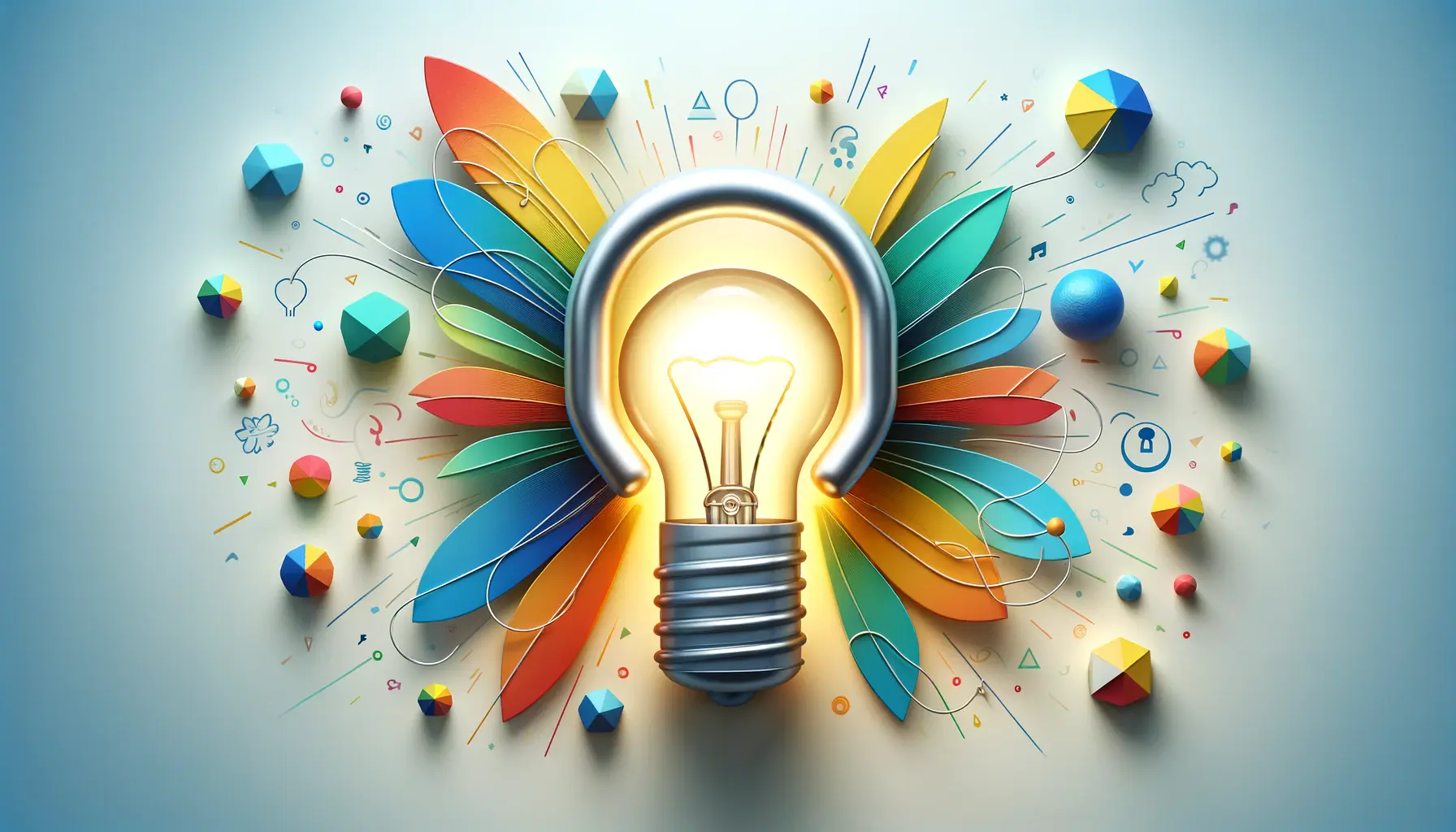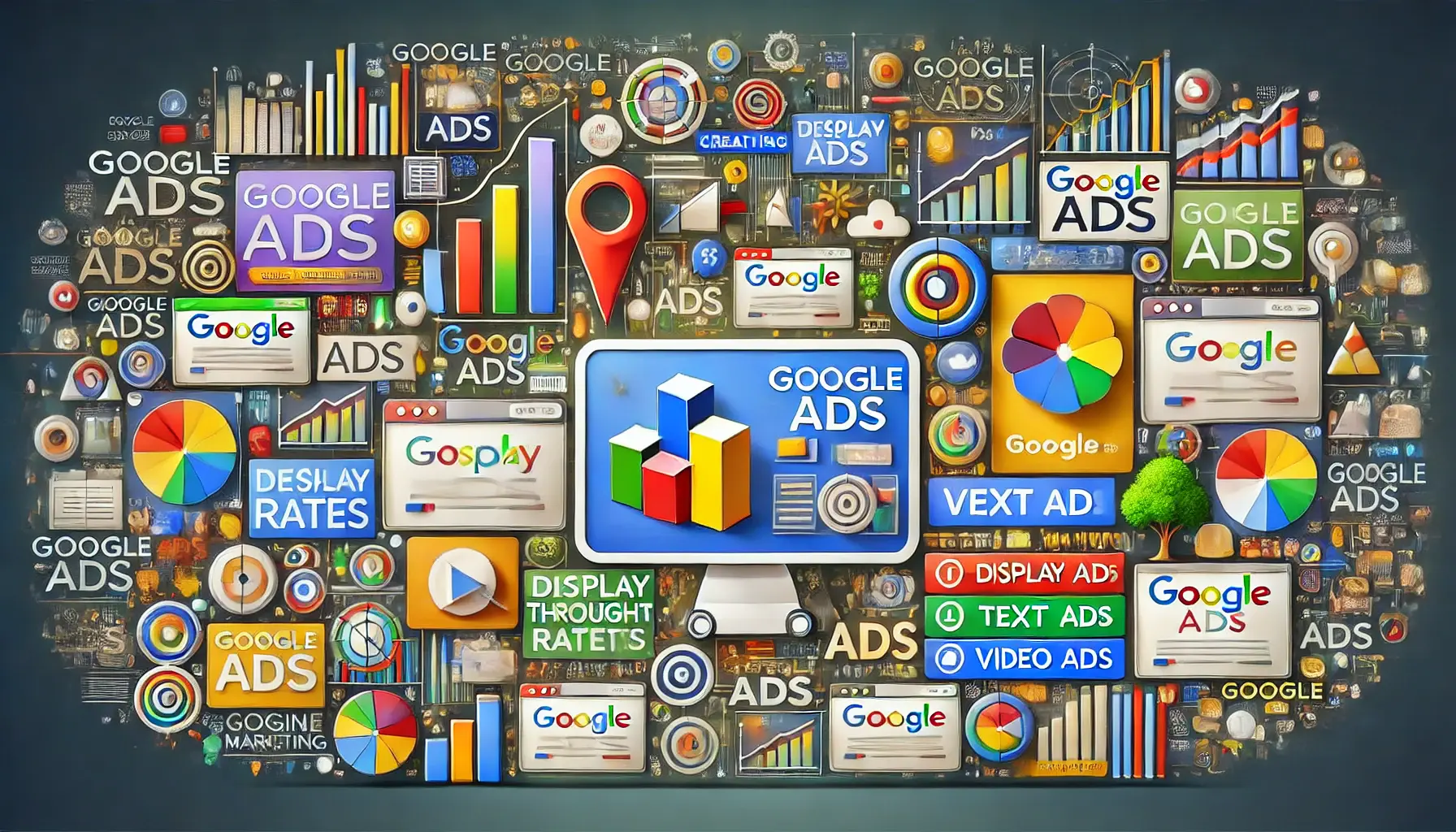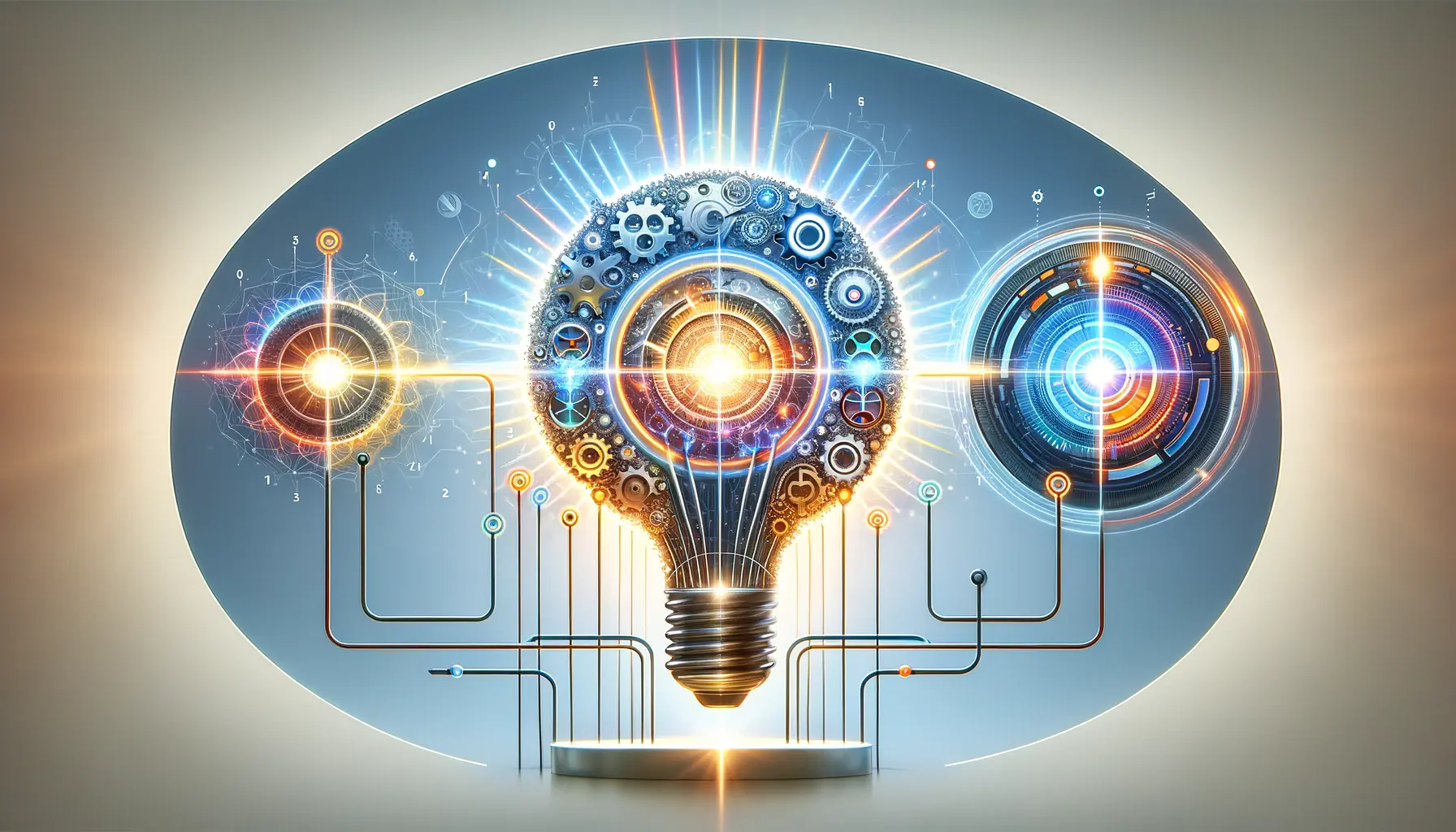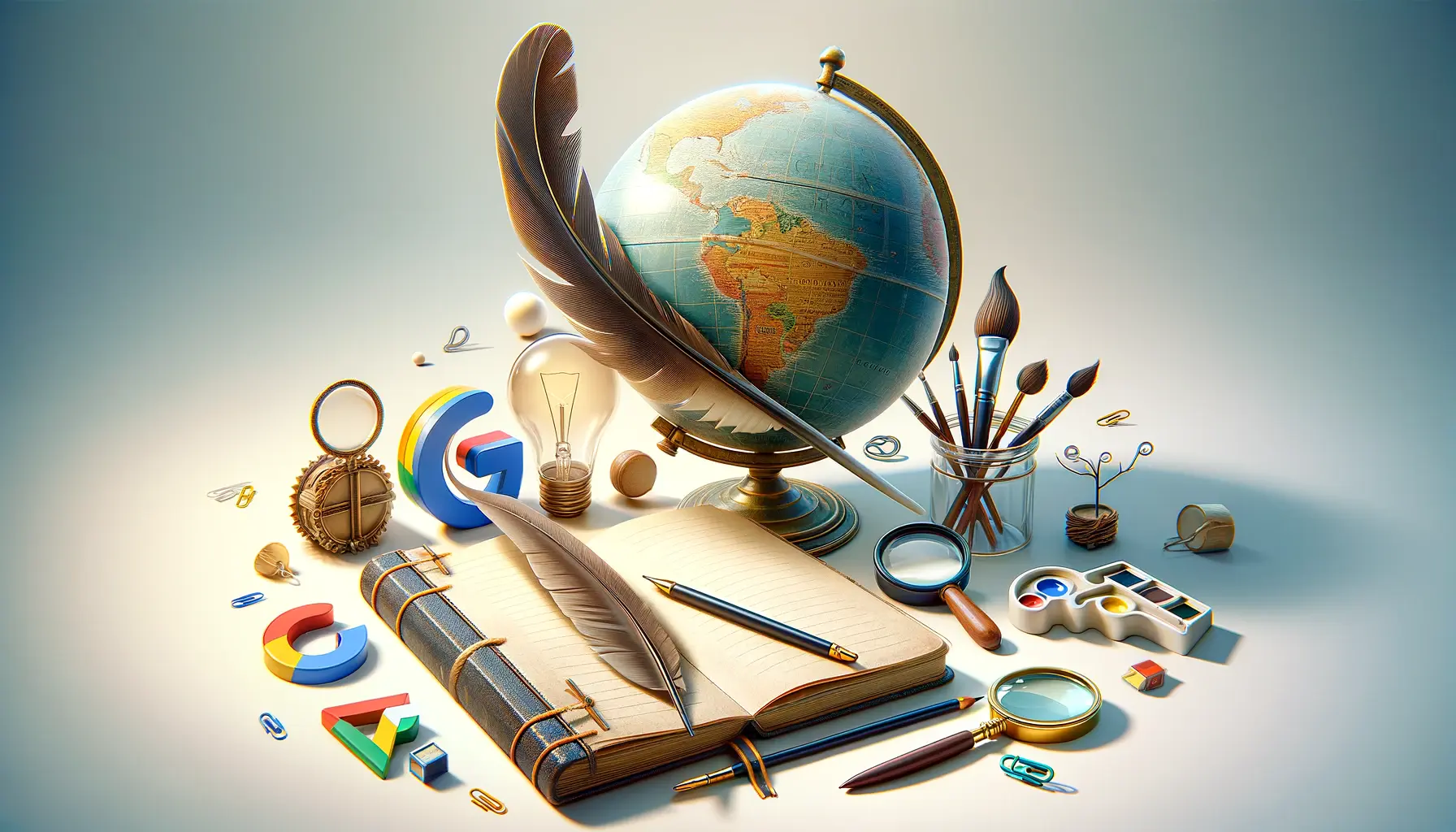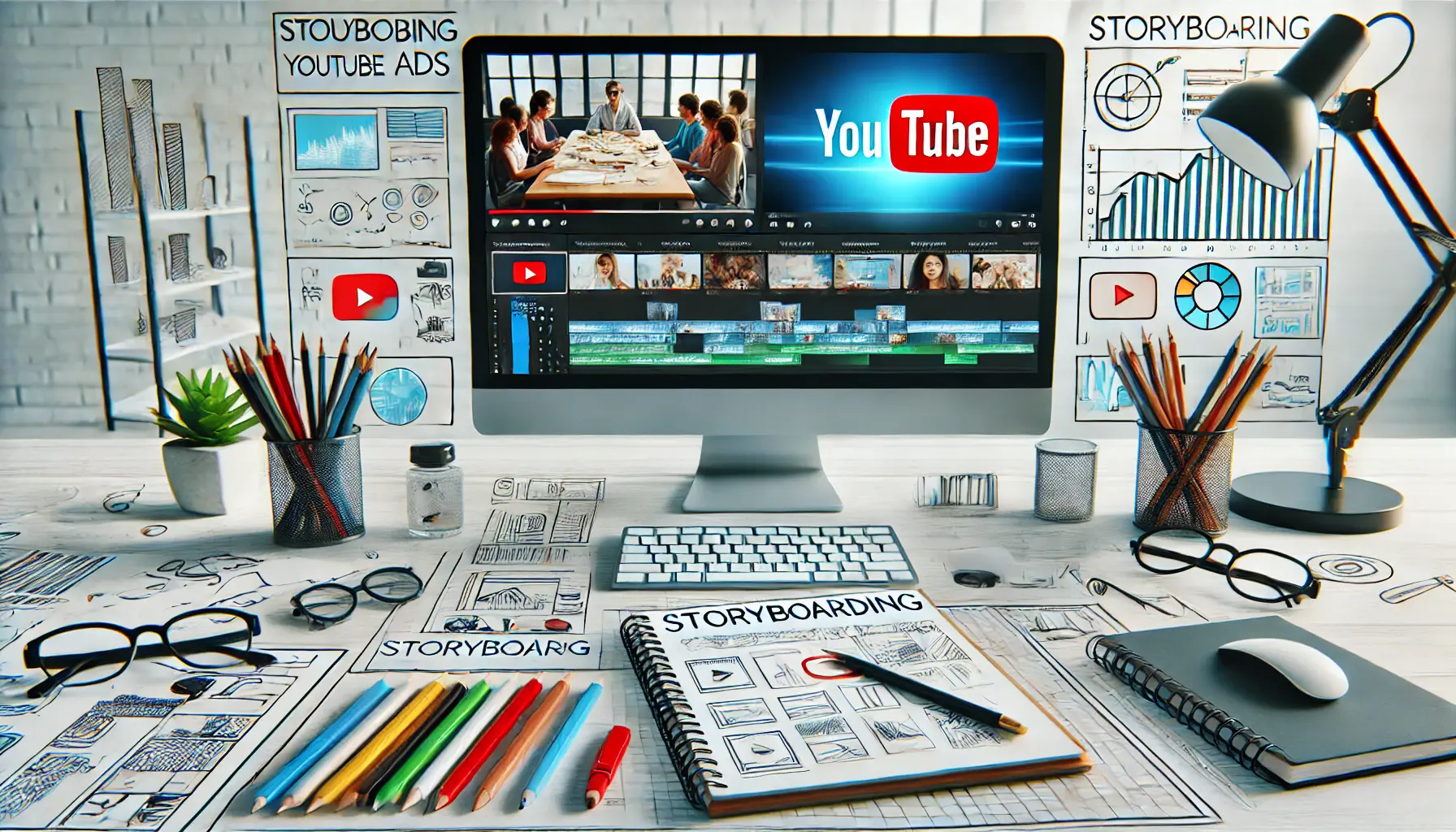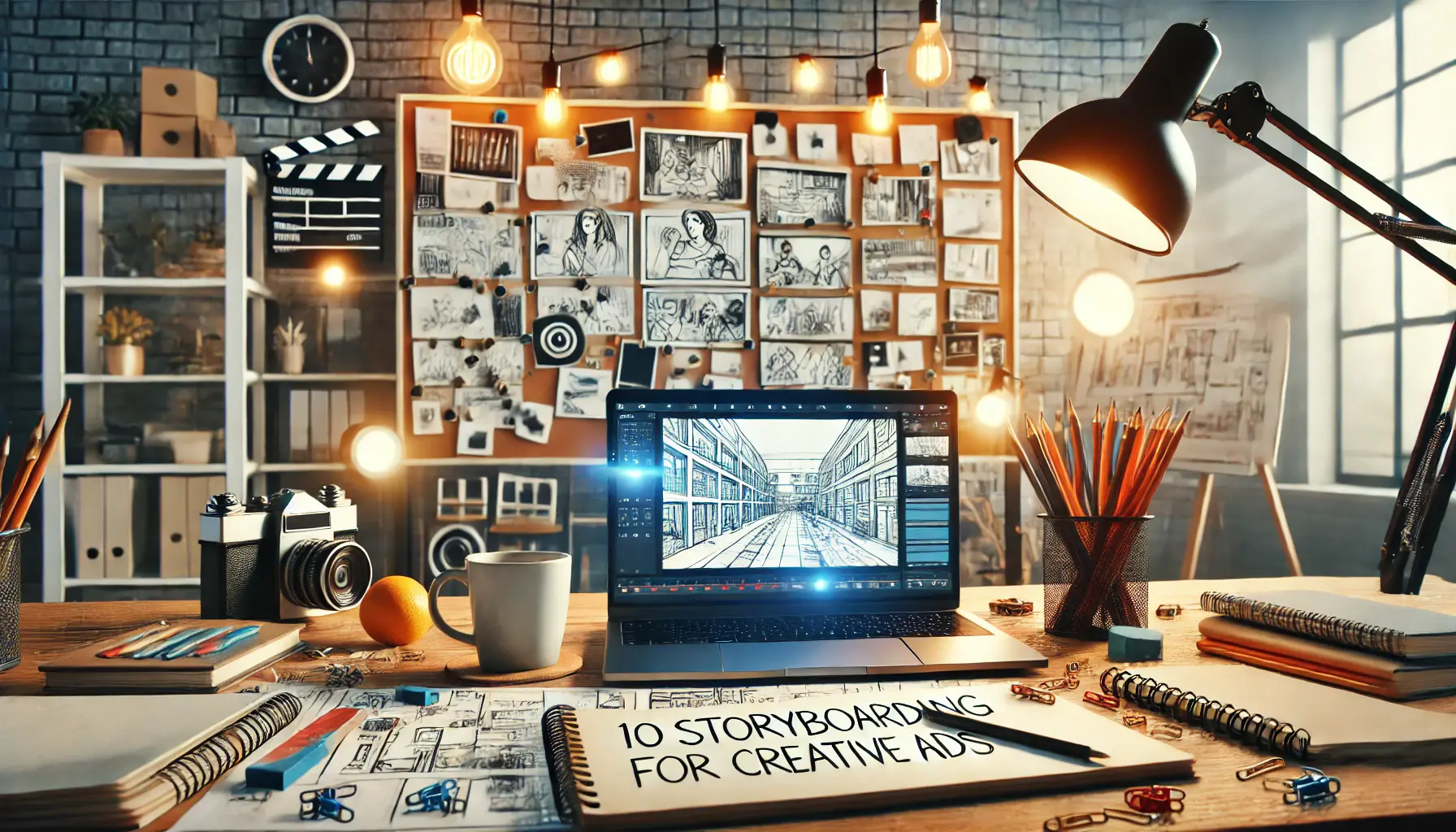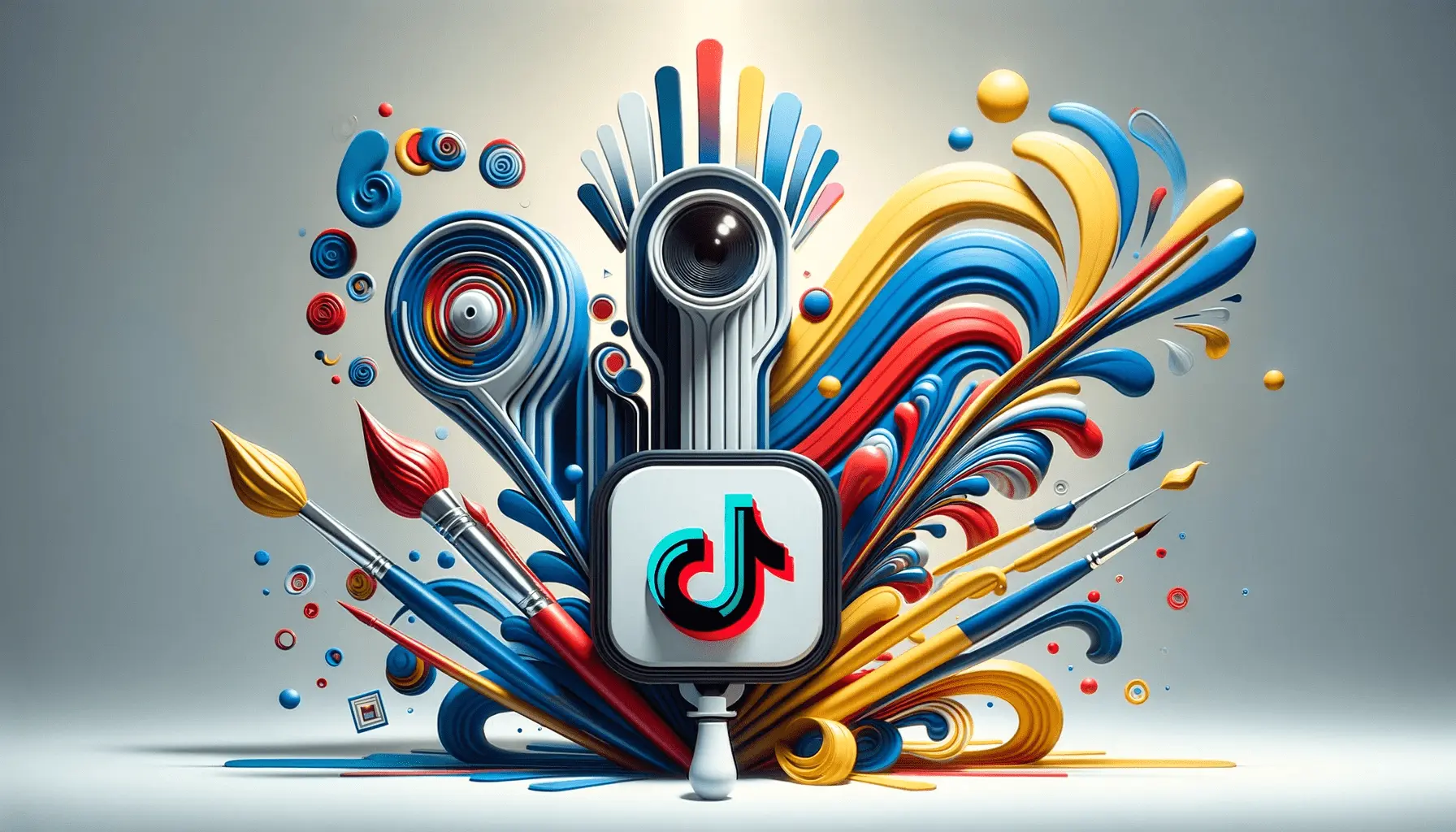Ad creatives are at the heart of every successful digital marketing campaign, and with the evolving landscape of online platforms, the need to stay on top of innovative trends is imperative.
In the case of Google Ads, ad creative strategies have faced serious transformations throughout the years.
Whether you’re starting with Google Ads or seeking refinement in your approach, grasping how ad creative has changed is a surefire way to get ahead.
In this article, we’ll explore the innovations that are shaping the future of Google Ads ad creatives and how you can leverage these changes to improve your campaigns.
- The Evolution of Ad Creative in Google Ads
- How Audience Targeting Shapes Ad Creative
- Emerging Trends in Google Ads Ad Formats
- Best Practices for Engaging Ad Creatives in Google Ads
- The Future of Ad Creative in Google Ads
- Conclusion: Unlock the Power of Ad Creative Innovations in Google Ads
- Google Ads: Frequently Asked Questions About Ad Creatives
The Evolution of Ad Creative in Google Ads
The world of Google Ads is dynamic, constantly evolving to meet the changing needs of advertisers and consumers alike.
As digital marketing has grown, so has the need for more engaging and interactive ad formats.
The days when static image ads were the only solution are long gone.
Dynamic and responsive ad creatives are the way to capture attention in today’s highly competitive market.
Understanding these changes can help you better grasp where Google Ads ad creative is heading and how you can adapt your strategies to align with the latest innovations.
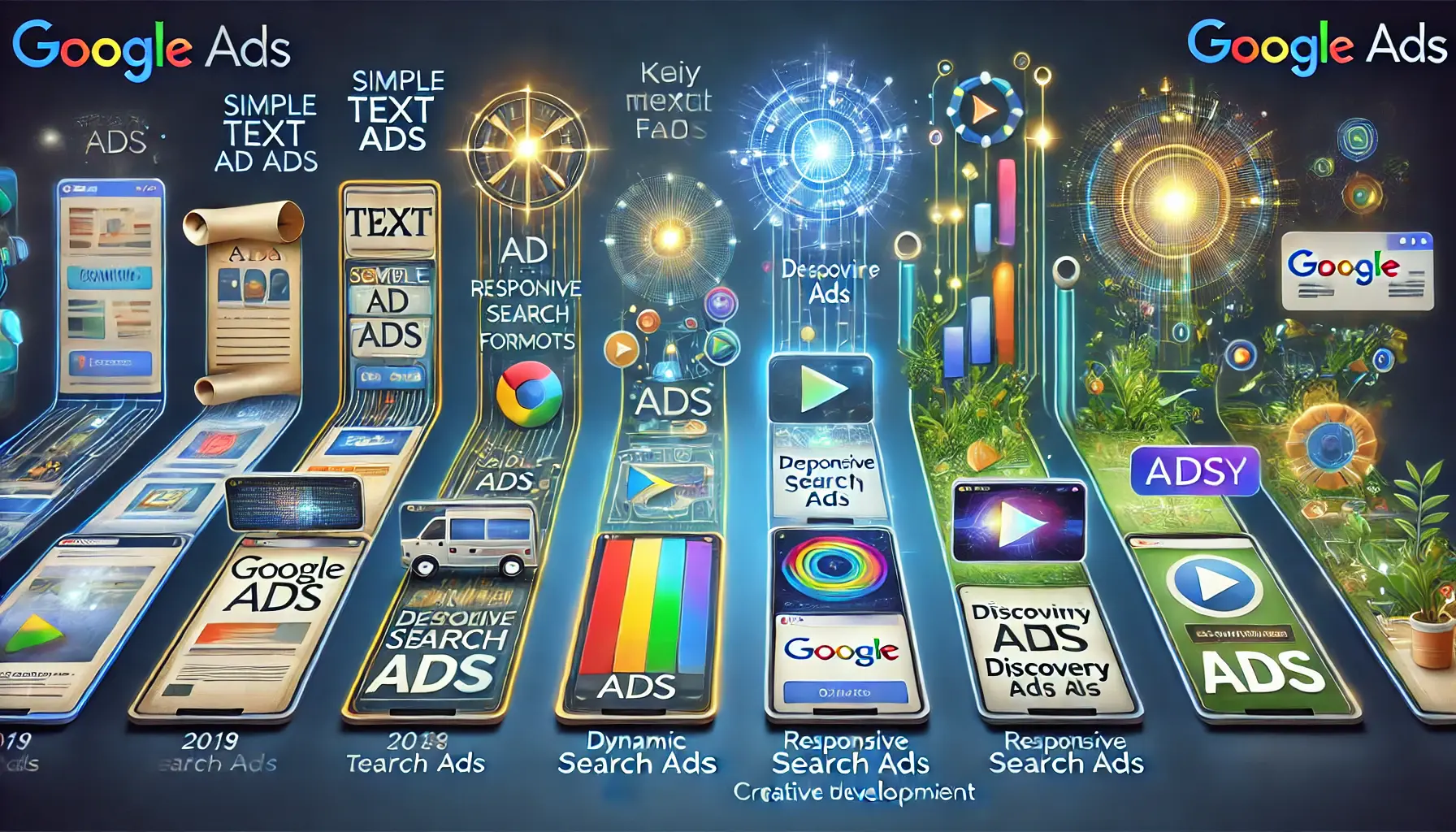
Visualizing Key Milestones in the Evolution of Google Ads Creative Development.
Key Milestones in Google Ads Creative Development
- 2000: Google Ads launched with simple text-based ads, focusing on keywords and relevancy.
- 2013: The introduction of enhanced campaigns brought mobile-first strategies into the spotlight, emphasizing the need for mobile-friendly ad creatives.
- 2016: Responsive Search Ads were introduced, allowing advertisers to automatically adjust their ad creatives to better match users’ search intent.
- 2020: Google rolled out Discovery Ads, which use visually rich formats across multiple Google properties like YouTube and Gmail.
- 2023: The rise of AI-powered ad creatives has taken center stage, enabling real-time personalization and dynamic adjustments based on user data.
These milestones highlight how Google Ads creatives have evolved from simple text ads to complex, AI-driven strategies.
Each step forward has equipped marketers with new tools to reach their audience more effectively.
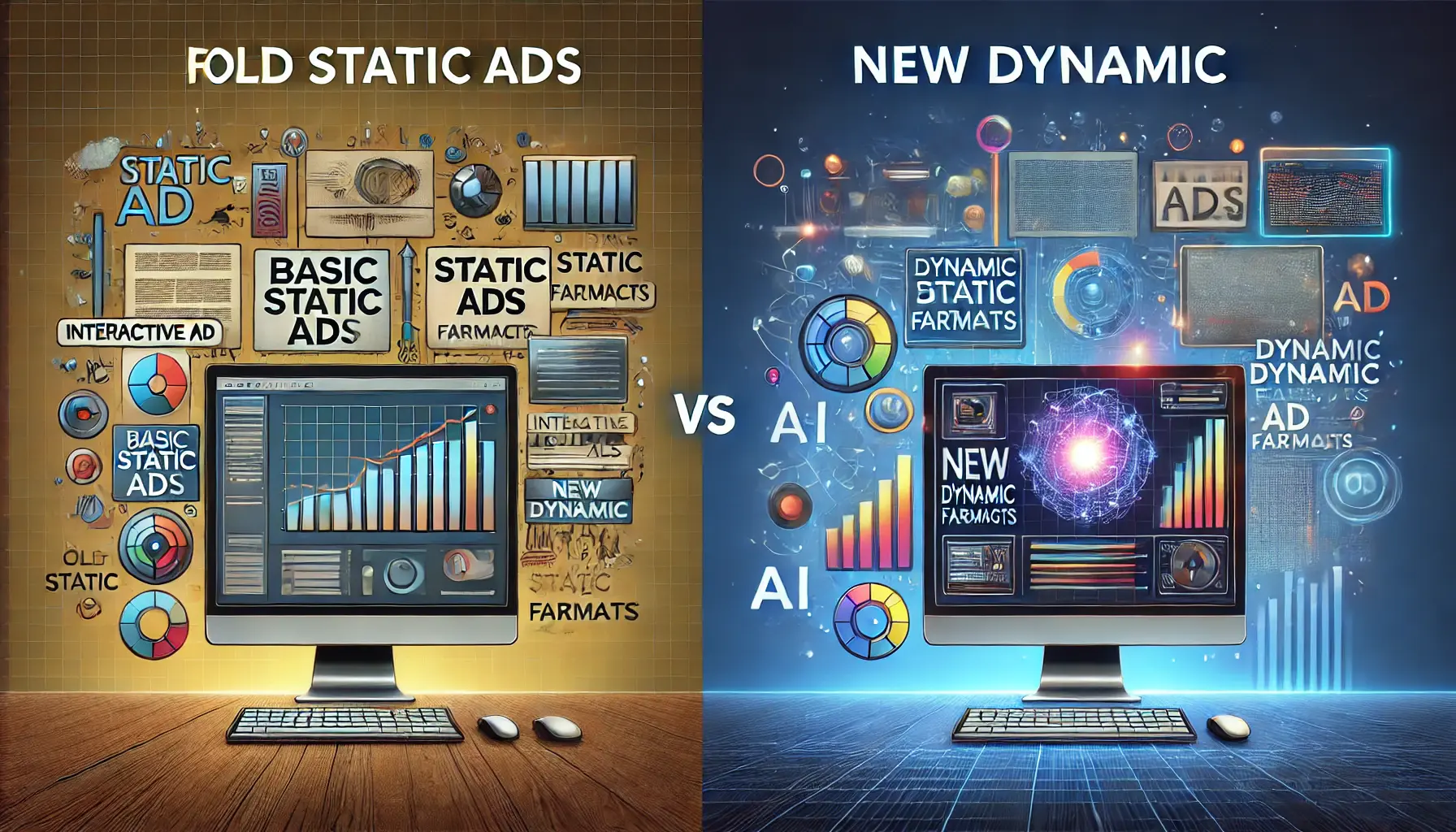
Illustrating the Shift from Static Ads to Dynamic Formats in Digital Advertising.
From Static Ads to Dynamic Formats
Static ads are still used in some campaigns, but they are becoming increasingly rare as dynamic ad formats take precedence.
Dynamic ads create a far more engaging user experience because the content adapts according to the user’s behavior, preference, and context.
For instance, dynamic adsAds that automatically adjust content based on user behavior and preferences. can pull product images and details from your website to automatically build personalized ads for each viewer.
This switch from static to dynamic has made it far easier for businesses to deliver a targeted message without the need to create multiple versions of their ads.
With machine learning and automation in play, Google Ads ensures the right message reaches the right audience at the right time, improving the likelihood of conversions.
When was the last time you updated your ad creative strategy?
If your campaigns are still using static ad formats, it might be time to explore dynamic ad options to remain competitive.
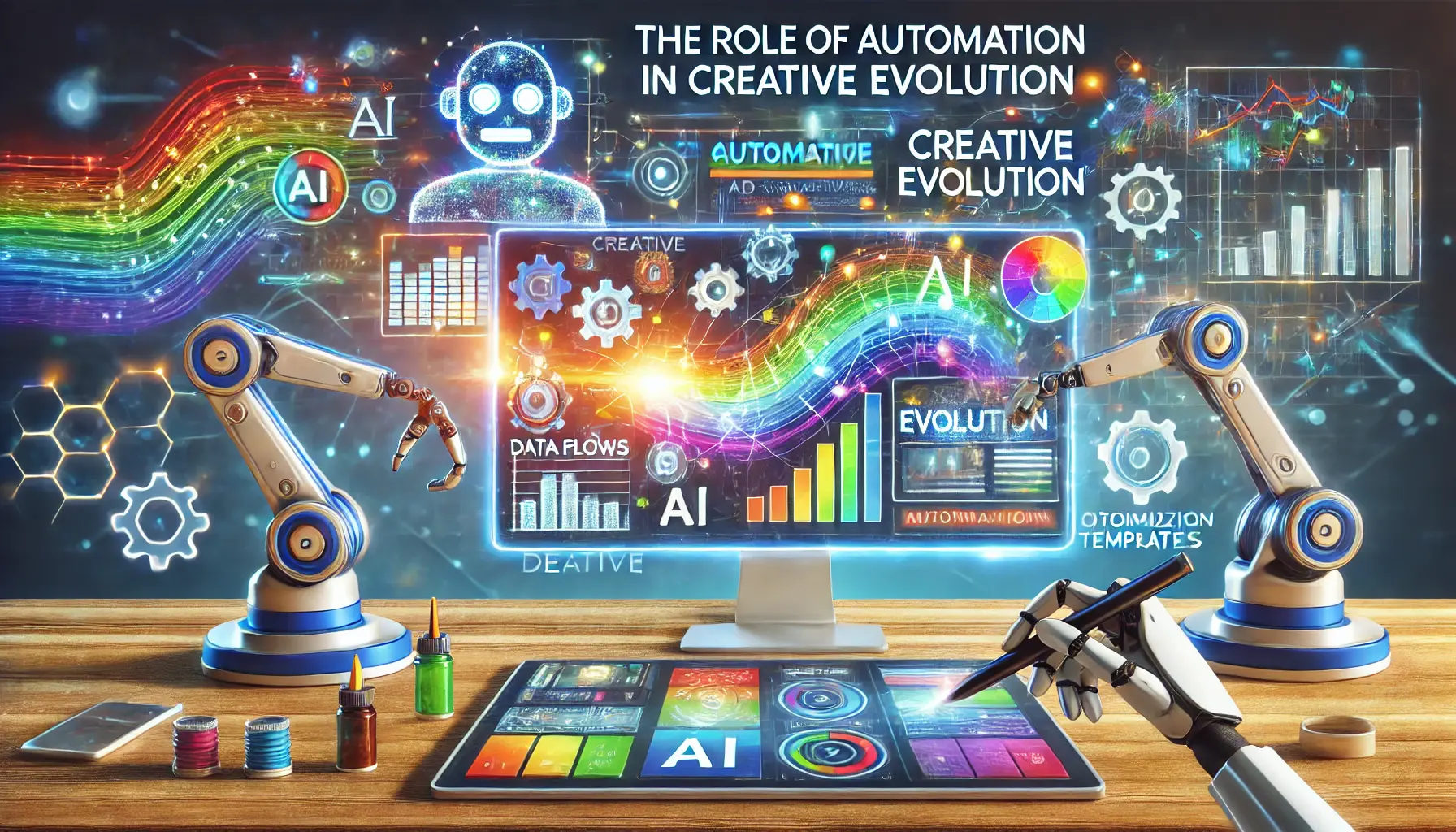
Depicting the Role of Automation in the Evolution of Creative Processes.
The Role of Automation in Creative Evolution
Automation has become a driving force behind the evolution of ad creatives in Google Ads.
With tools like Responsive Search AdsAd format in Google Ads that automatically adjusts headlines and descriptions for better performance. and Performance MaxA campaign type in Google Ads that uses automation to run ads across all Google channels. campaigns, Google leverages automation to test and optimize a variety of ad creative elements—headlines, descriptions, images, and videos—ensuring that the most compelling combinations are displayed to users.
- Automation saves time and resources by creating several ad variations automatically.
- It helps you reach a broader audience by adjusting creatives to fit various user preferences.
- Constant optimization leads to improved performance and higher conversion rates.
The more you adopt automation, the more you stay ahead of the competition rather than merely keeping up.
With more automated solutions than ever available within Google Ads, there has never been a better time to integrate them into your campaigns.
Google Ads has transitioned from basic text ads to complex, AI-driven strategies, and staying updated with these changes is crucial for success.
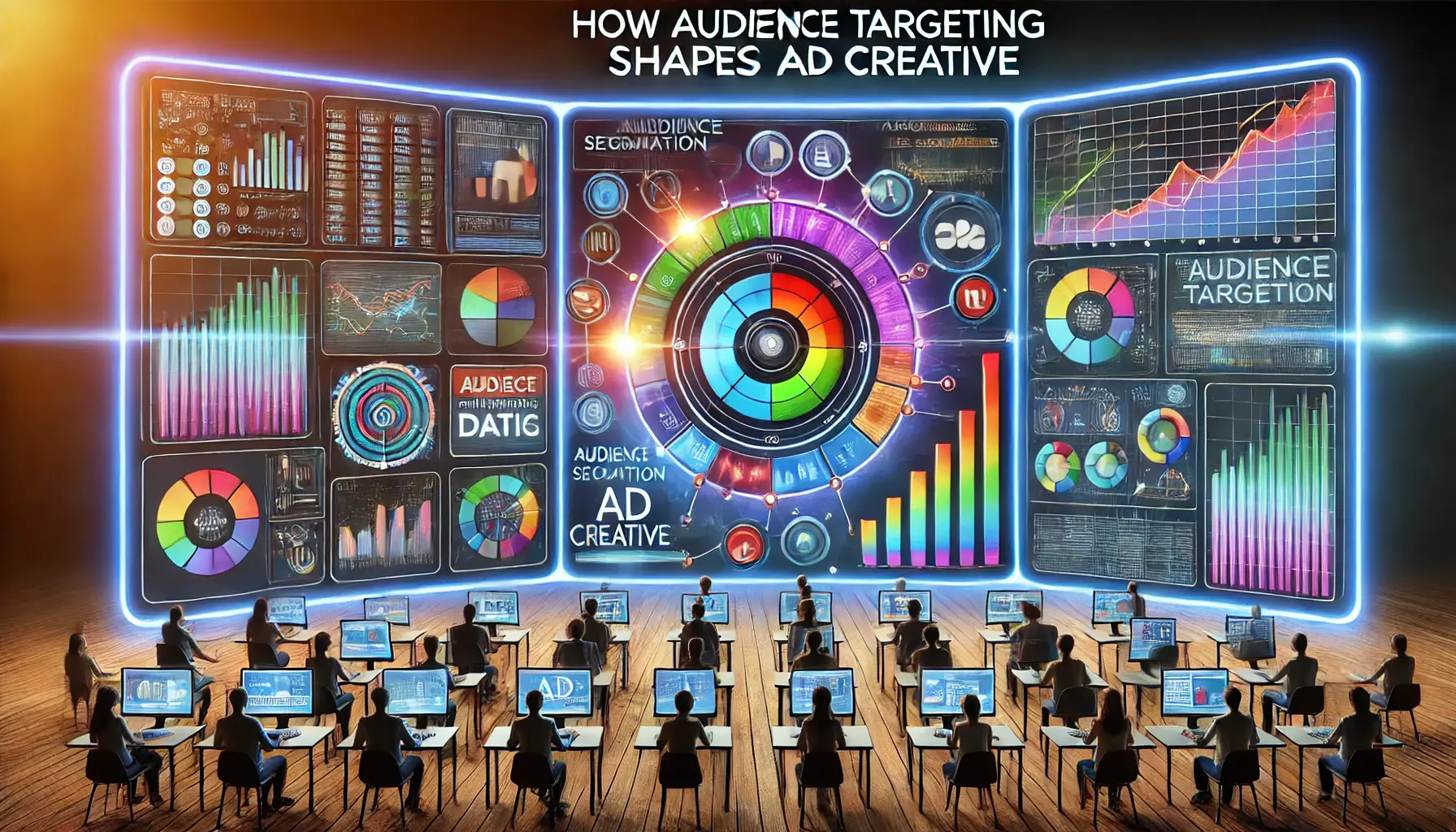
Illustrating the Impact of Audience Targeting on Ad Creative Design.
How Audience Targeting Shapes Ad Creative
Audience targeting in Google Ads has revolutionized how businesses craft their ad creatives.
Gone are the days when it was about crafting cool ads; now, it’s about ensuring those ads speak to the right people at the right time.
Audience targeting allows businesses to create ad creatives that truly resonate with specific user segments, increasing relevance and improving overall ad performance.
Google Ads offers various choices of audience targeting, each with different effects on ad creatives.
Let’s explore how audience targeting informs ad creative strategies and yields superior campaign performance.
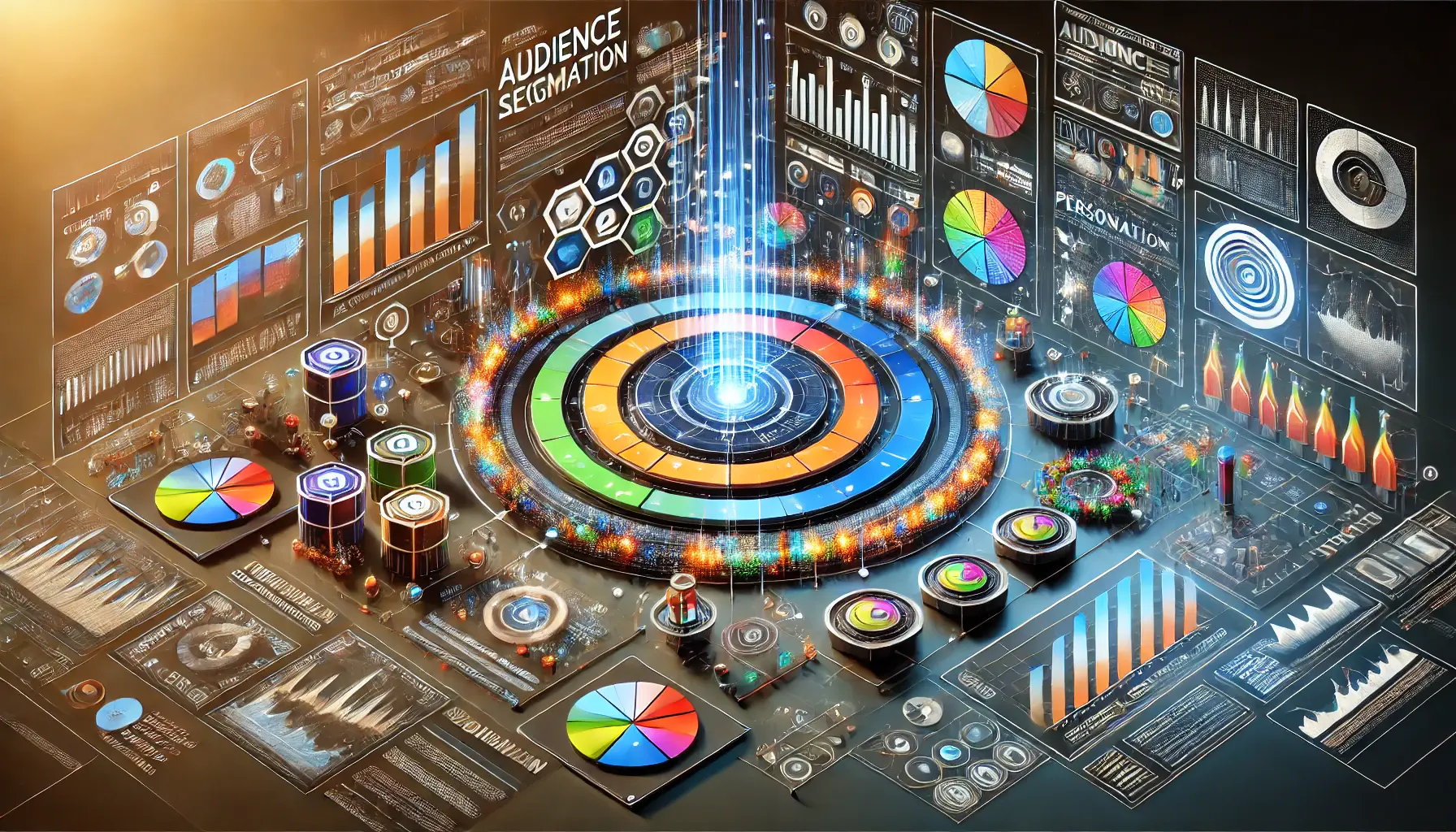
Visualizing Audience Segmentation and Personalization in Digital Advertising.
Understanding Audience Segmentation and Personalization
The power of audience segmentation lies in its ability to divide your target market into smaller, more specific groups based on demographics, interests, and online behaviors.
With tools like in-market audiencesUsers actively searching for products or services, making them more likely to convert. and affinity audiencesGroups of users categorized by their long-term interests and lifestyle preferences., Google Ads allows businesses to target users who are actively searching for products or have a high affinity for specific topics or services.
- In-market audiences: These users are actively searching and considering products or services like yours, making them prime candidates for conversion. For example, a car dealer targeting users searching for “affordable SUVs” can directly tailor ad creatives to capture this interest.
- Affinity audiences: These groups are based on long-term interests and browsing behaviors, allowing advertisers to create ads tailored to specific lifestyle or interest groups. For instance, targeting a “travel buffs” audience with images of exotic destinations can significantly boost engagement.
By leveraging detailed audience insights, you can better align your creatives with the needs and desires of each segment, leading to stronger engagement and increased campaign effectiveness.
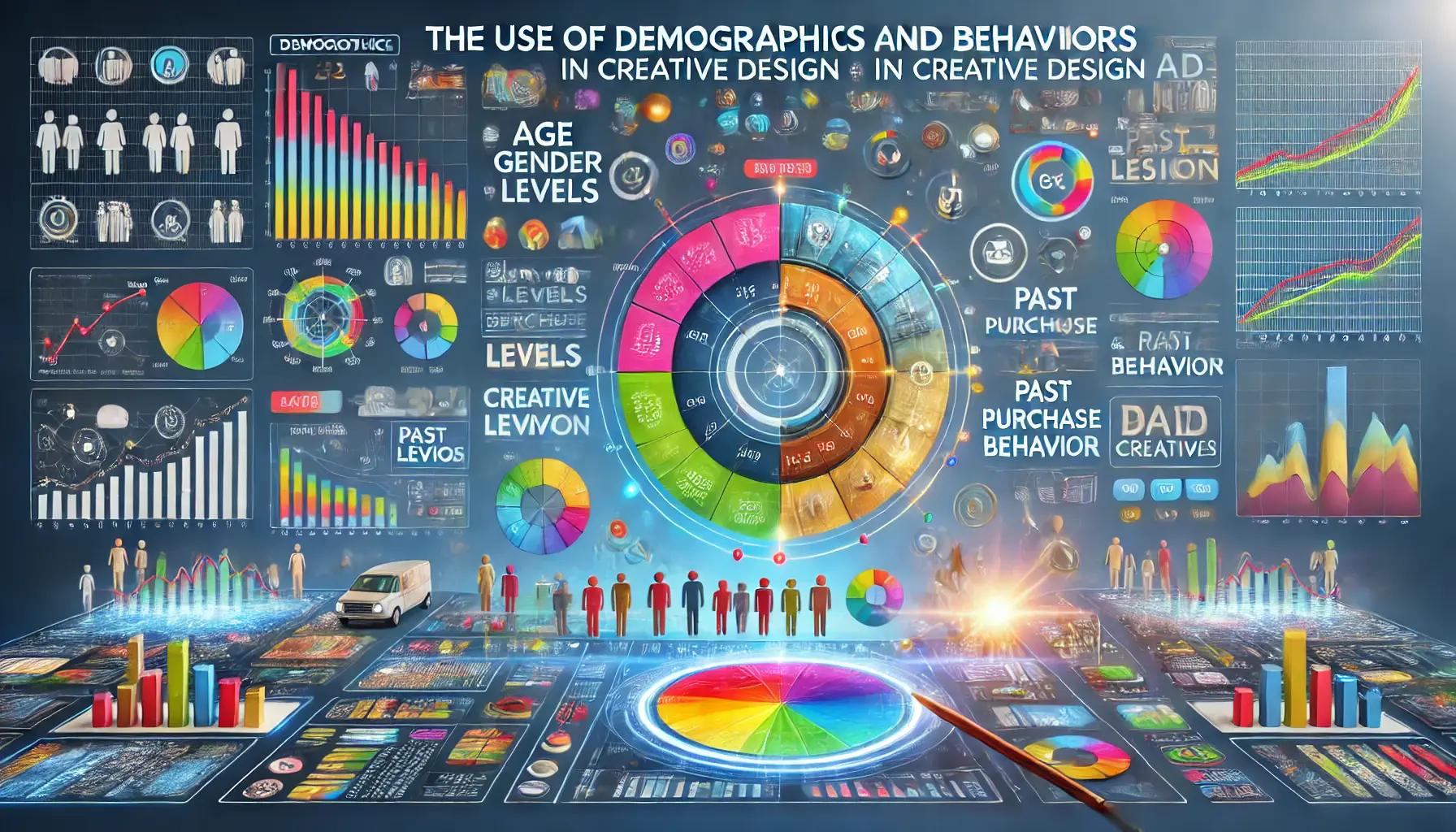
Using Demographic and Behavioral Insights in Creative Design for Digital Ads.
Leveraging Demographics and Behaviors in Creative Design
Demographic and behavioral data form the foundation upon which ad creatives are designed.
Google Ads enables advertisers to filter audiences by variables like age, gender, and household income.
These filters help refine ad designs for specific demographic groups.
For instance, a luxury watch brand targeting high-income households can craft ad creatives that emphasize exclusivity and craftsmanship.
Beyond demographics, behavioral data, such as past purchase history or website interactions, can be used to create more resonant and personalized ad creatives.
Understanding your audience’s behavior and demographics ensures that your ad creatives are not only engaging but also highly relevant to your audience’s needs.
As audience targeting continues to evolve, embedding these insights into your ad creative strategy will be essential for staying competitive in digital marketing.
Audience targeting ensures that ad creatives resonate more with specific segments, improving ad performance and engagement.
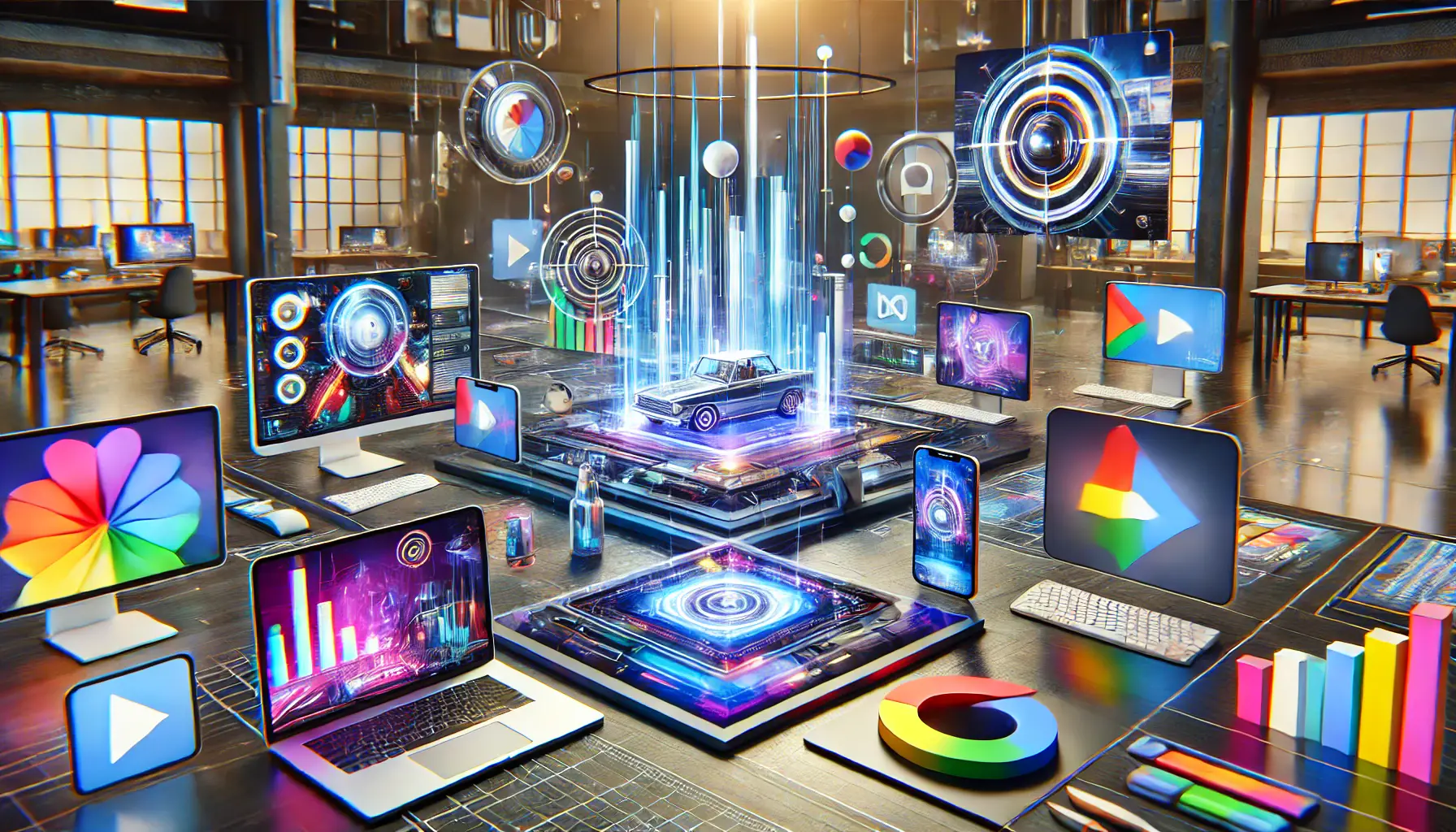
Showcasing Emerging Trends in Google Ads Ad Formats Across Multiple Devices.
Emerging Trends in Google Ads Ad Formats
The landscape of Google Ads keeps evolving, with new formats and strategies designed to capture audience attention in dynamic and engaging ways.
In 2024, ad innovation is gaining even more momentum, making ads not only interactive but also highly personalized.
These emerging trends are vital for any business looking to outcompete others in the competitive world of digital marketing.
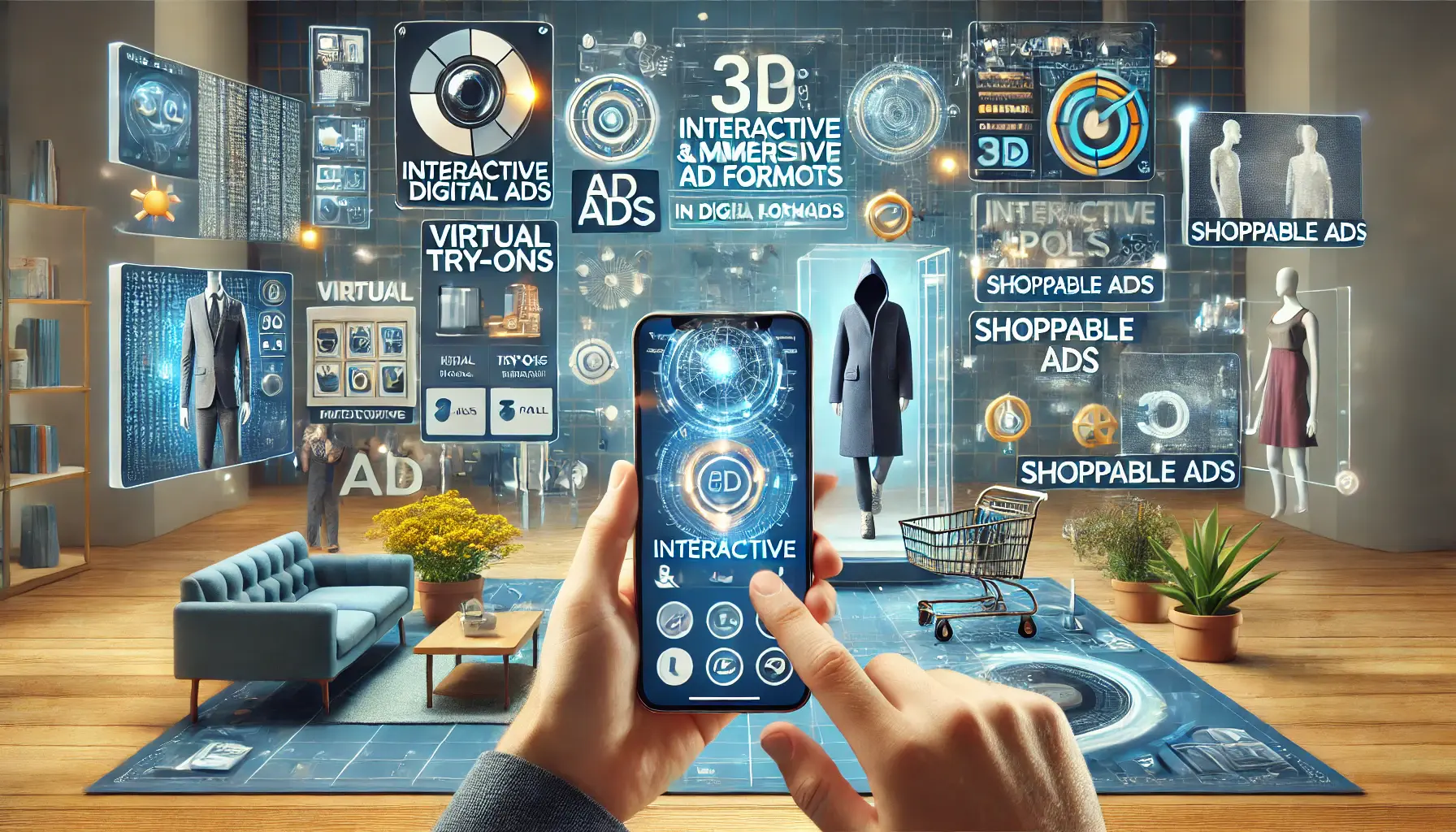
Showcasing Interactive and Immersive Ad Formats in Digital Advertising.
Interactive and Immersive Ad Formats
Interactive ads, such as polls, quizzes, and AR (Augmented Reality) experiences, are gaining traction in 2024.
These formats encourage users to actively participate in the ad experience, resulting in higher engagement rates.
For example, an AR ad can allow users to virtually try on a product, like glasses or a new outfit, directly from the search results.
Advertisers are also experimenting with shoppable ads, where users can purchase products directly from the ad.
These ads are especially effective in eCommerce campaigns, offering users a seamless shopping experience.

Depicting Video Ads as a Powerful Tool in Google’s Advertising Network.
Video Ads: A Powerful Tool in Google’s Network
Video advertising is projected to grow significantly in 2024, with platforms like YouTube Shorts becoming key players in the short-form video space.
As attention spans decrease, these quick, energetic ads are highly effective at capturing user interest.
Video ad targeting is more refined, and platforms like Performance Max automate the process of creating and optimizing videos for maximum engagement.
Moreover, video is being integrated more into search ads, enabling users to watch product demonstrations directly from search results, making the experience more engaging and informative.
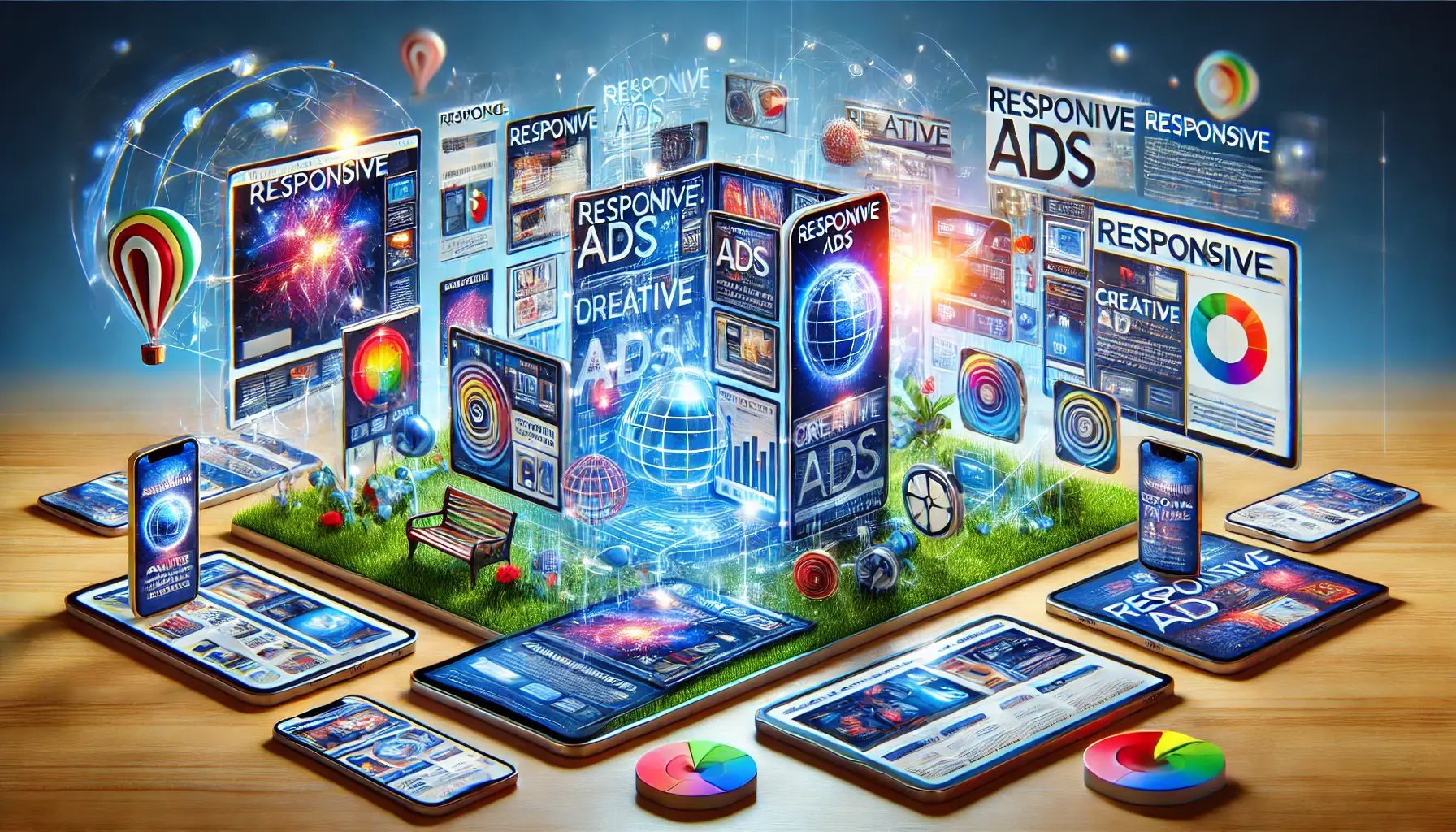
Illustrating the Creative Potential of Responsive Ads in Digital Advertising.
Responsive Ads and Their Creative Potential
Responsive ads have become a cornerstone of Google Ads, and their capabilities continue to expand.
In 2024, AI-driven creative assets will dynamically adjust ad visuals and messaging based on user behavior.
These dynamic image ads can personalize the ad experience by resizing visuals and tailoring messages to user preferences, which can lead to better conversion rates.
Responsive ads also allow advertisers to test a variety of creative elements, including headlines, descriptions, and images, at scale and in real-time.
This makes them a go-to format for advertisers aiming for maximum reach and relevance.
As these emerging trends continue to shape Google Ads, staying up to date and adapting your ad formats to align with audience behavior will be critical to competing effectively in 2024.
2024 trends include interactive ad formats, like polls and AR, and the rise of video ads in Google Ads.
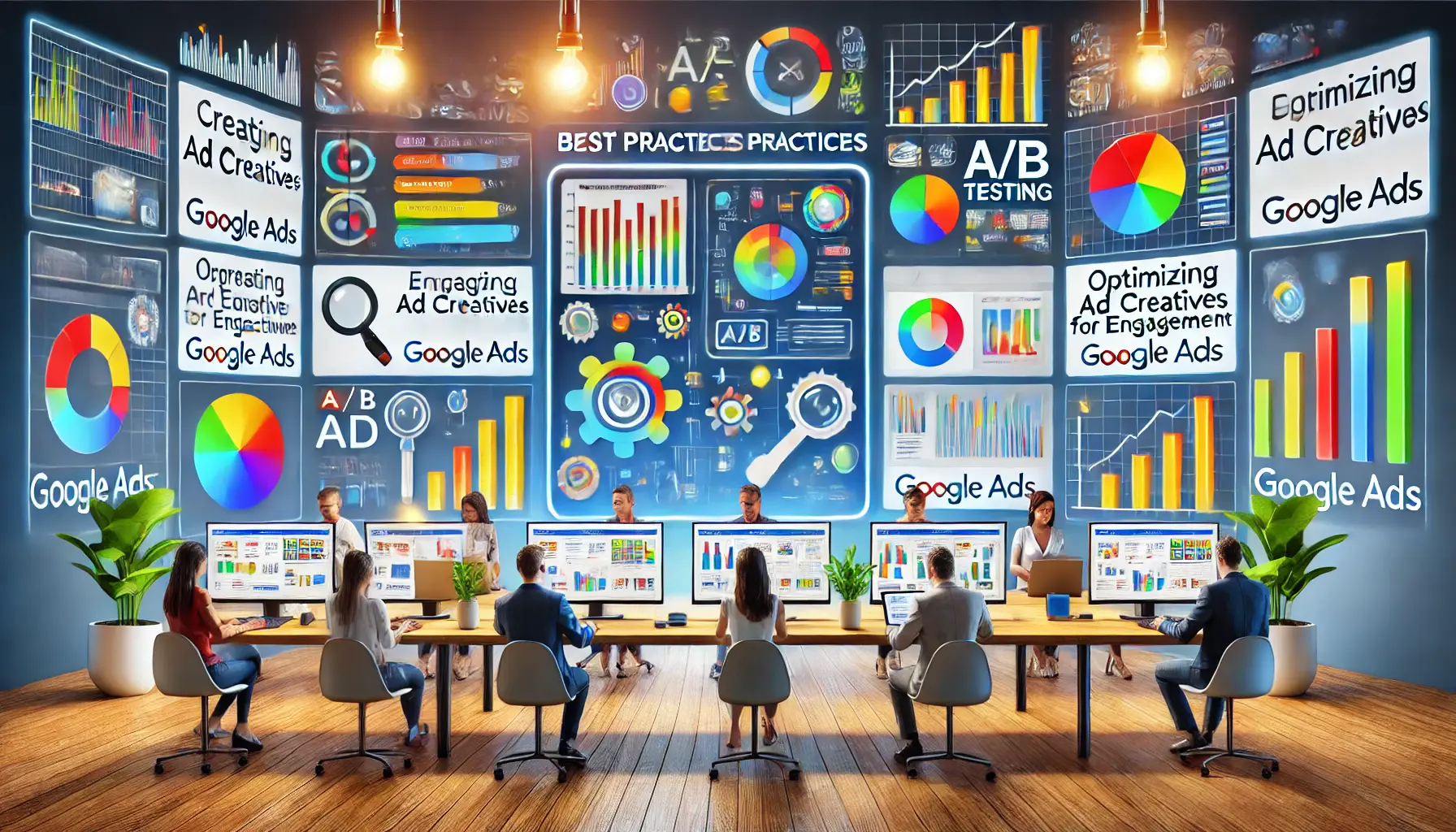
Visualizing Best Practices for Creating Engaging Ad Creatives in Google Ads.
Best Practices for Engaging Ad Creatives in Google Ads
Creating effective ad creatives in Google Ads goes beyond just grabbing attention; it’s about crafting experiences that resonate with your target audience.
As Google Ads continues to be one of the most innovative platforms in 2024, following best practices for creative development will help achieve high levels of engagement and conversion rates.
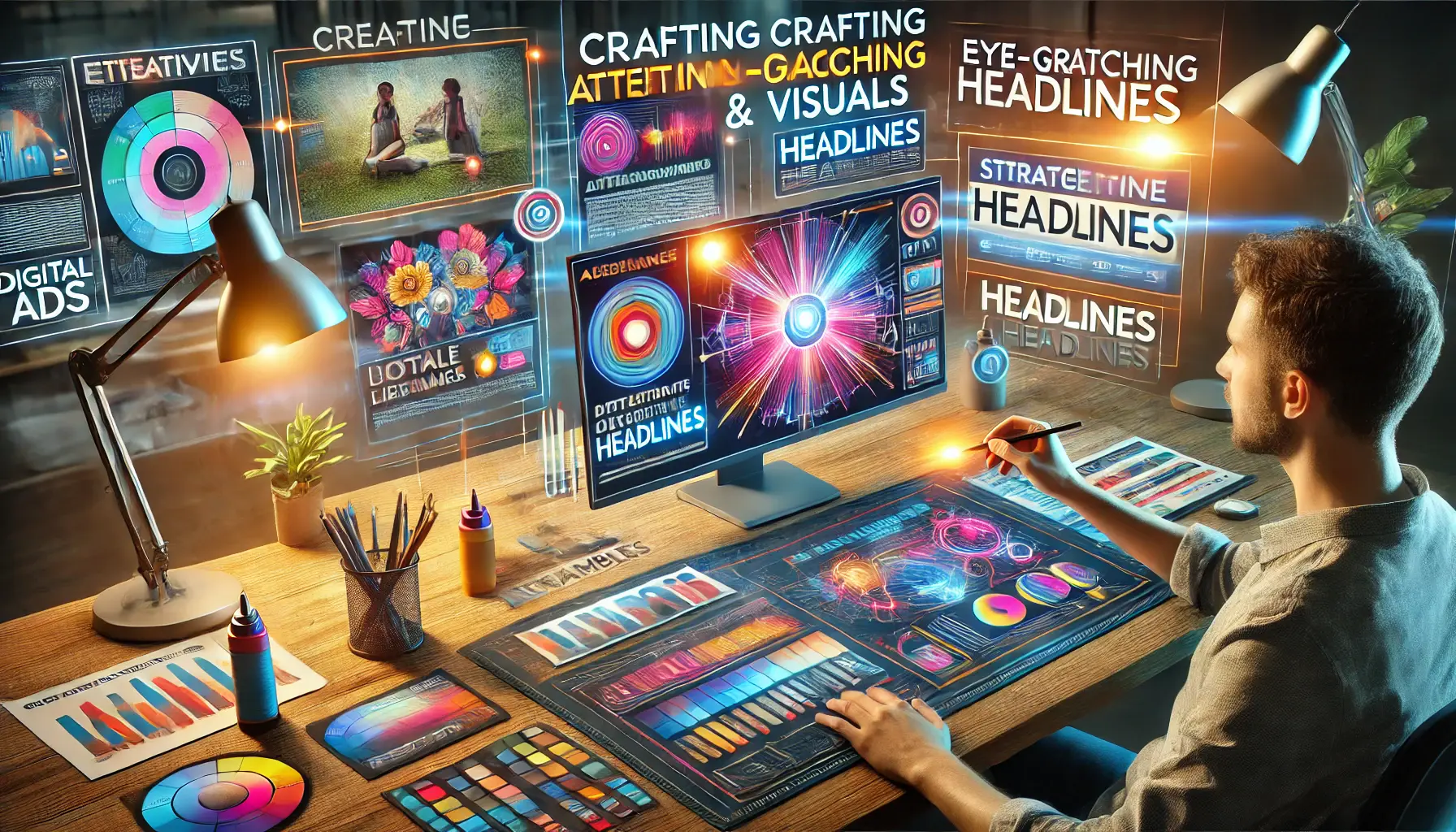
Illustrating the Process of Crafting Attention-Grabbing Headlines and Visuals in Digital Advertising.
Crafting Attention-Grabbing Headlines and Visuals
Your headline is the first thing users notice, and in today’s highly competitive digital landscape, it needs to be both clear and appealing.
Best practices suggest including your product name and a strong call-to-action (CTA) in headlines, which can improve conversions by up to 8% on average.
When combined with attractive, high-resolution images that are uncluttered and free from excessive overlays, your ad creatives are more likely to engage users right from the start.
- Use headlines with fewer than 20 characters to improve readability on mobile devices.
- Incorporate brand logos and relevant images to reinforce brand identity.
- Ensure images are high-resolution and clear of clutter.
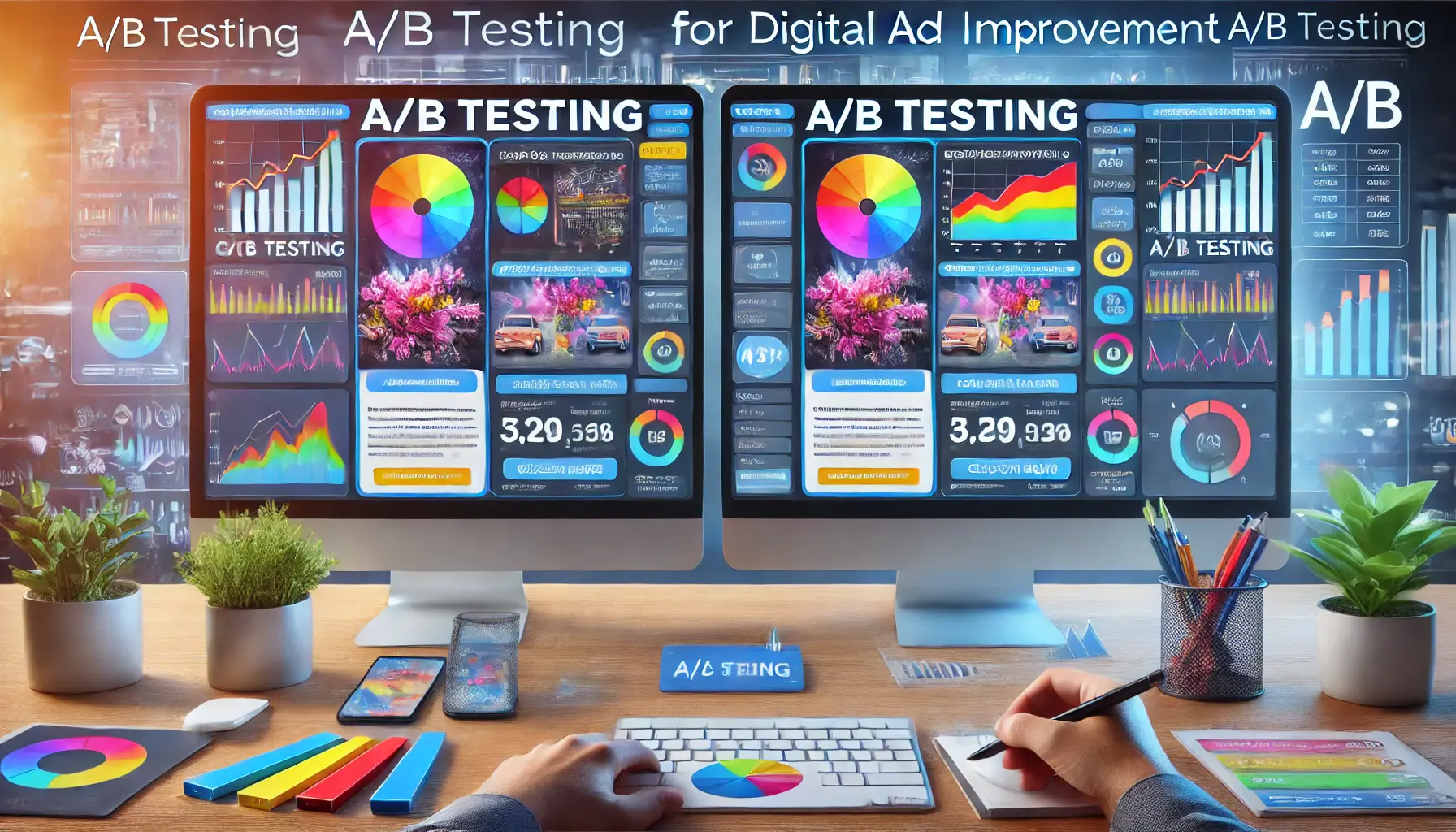
Depicting A/B Testing for Optimizing Digital Ad Performance.
A/B Testing for Continued Improvement
A/B testing is crucial for optimizing ad performance.
By testing different variations of headlines, images, and descriptions, you can determine which combinations resonate best with your audience.
Google’s Responsive Search Ads feature allows you to input multiple versions of your ad elements, which are automatically tested to find the best-performing combinations.
- Regularly monitor key performance metrics such as click-through rates (CTR) and conversion rates.
- Test various calls-to-action and messaging tones to see what resonates with your audience.
- Let tests run for 2-3 weeks before making changes, giving the system time to learn and adjust.

Illustrating the Importance of Copywriting in Driving Ad Success.
The Role of Copywriting in Ad Success
In 2024, ad copy needs to be contextual, personalized, and action-oriented.
Personalizing your message to reflect the user’s search intent and using words like “you” to directly engage users can increase CTR by as much as 15%.
Keeping descriptions under 90 characters ensures that your message is concise and impactful.
It’s also important to connect emotionally with your audience.
Adding inclusive and diverse imagery, combined with copy that addresses the user’s personal needs or challenges, can enhance engagement and drive better results.
By focusing on these best practices, you will create Google Ads creatives that not only capture attention but also deliver meaningful outcomes for your business.
- Use concise headlines with strong CTAs.
- A/B test ad elements for optimized performance.
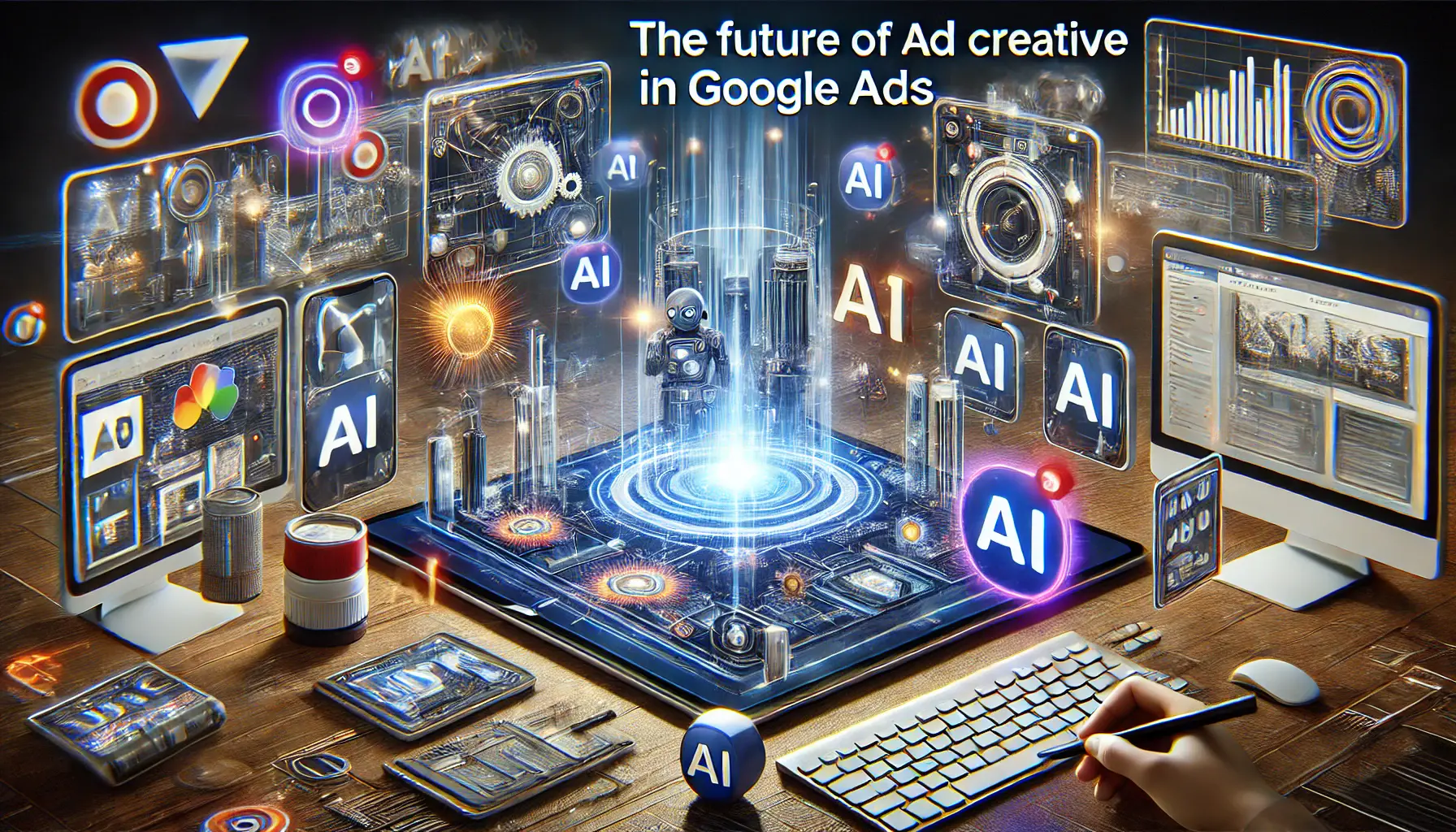
Visualizing the Future of Ad Creative in Google Ads with AI and Personalization.
The Future of Ad Creative in Google Ads
Going into 2024, AI is driving revolutionary changes in how ad creatives are generated and optimized in Google Ads.
AI is continuously helping not only in generating ads more quickly but also in making them more relevant and personalized.
The future of ad creative lies in leveraging AI to deliver more engaging, dynamic, and tailored ad experiences for users across various platforms.
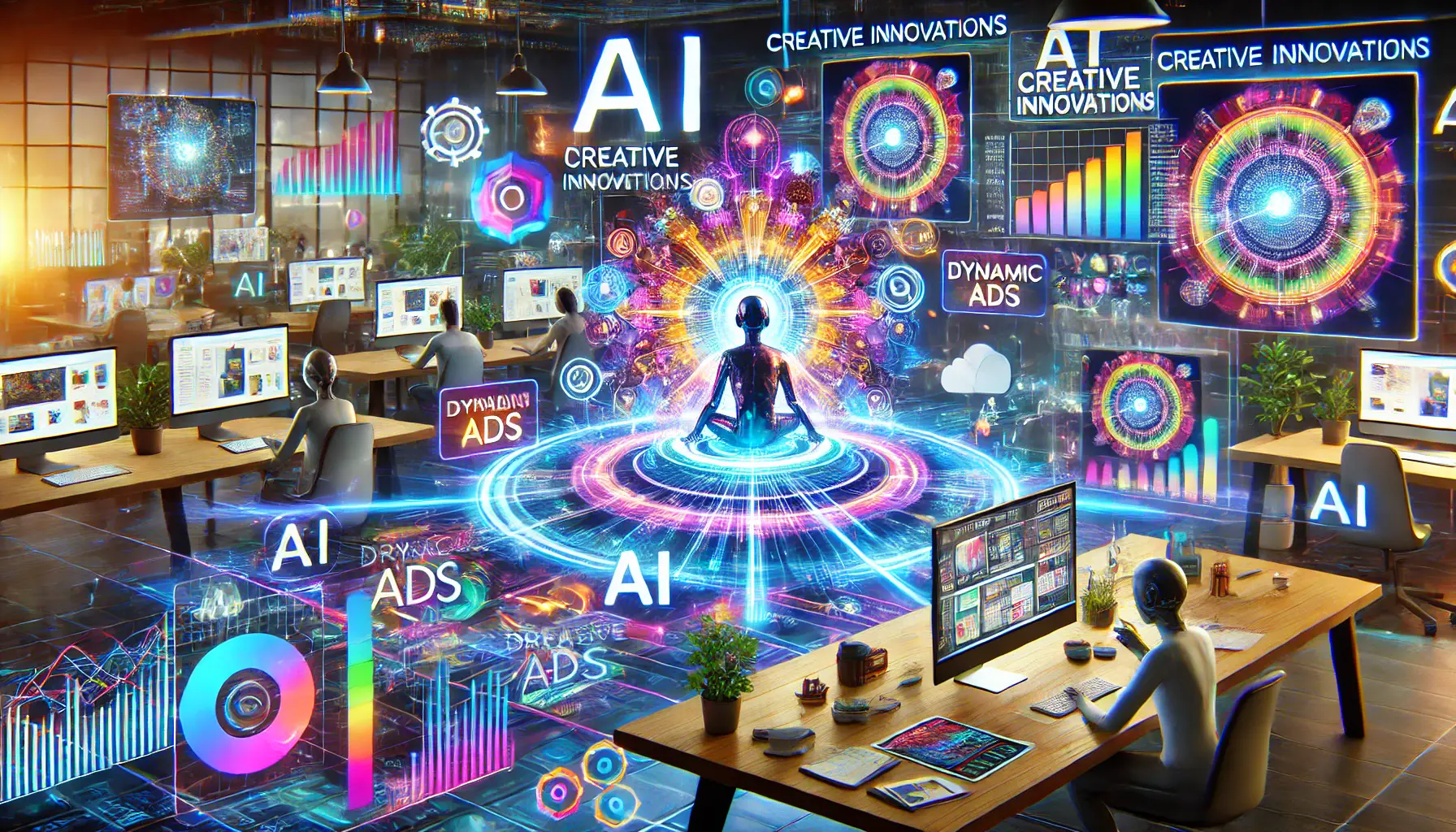
Illustrating AI-Driven Creative Innovations in Digital Advertising.
AI-Driven Creative Innovations
AI has become a game-changer in the advertising world, enabling advertisers to produce multiple ad variants in a fraction of the time it once took.
AI-driven creative automation, like Google’s Auto-Generated Assets, creates hyper-personalized advertisements by using historical data and real-time insights matched to a specific user’s preferences and behavior.
This allows advertisers to pivot quickly as trends change, without the manual labor of crafting new ads.
More specifically, AI enhances ad creative in several key ways:
- Programmatic Creative: AI now automates not only ad targeting but also the creation of visuals, headlines, and call-to-actions, optimizing them for specific audience segments and platforms.
- Personalization: AI improves ad personalization by analyzing user behavior and search intent, enabling advertisers to create highly targeted and relevant ads for each audience segment.
- Predictive Analytics: AI can forecast trends and optimize campaigns in real time, adjusting bids, creatives, and placements to maximize engagement and ROI.
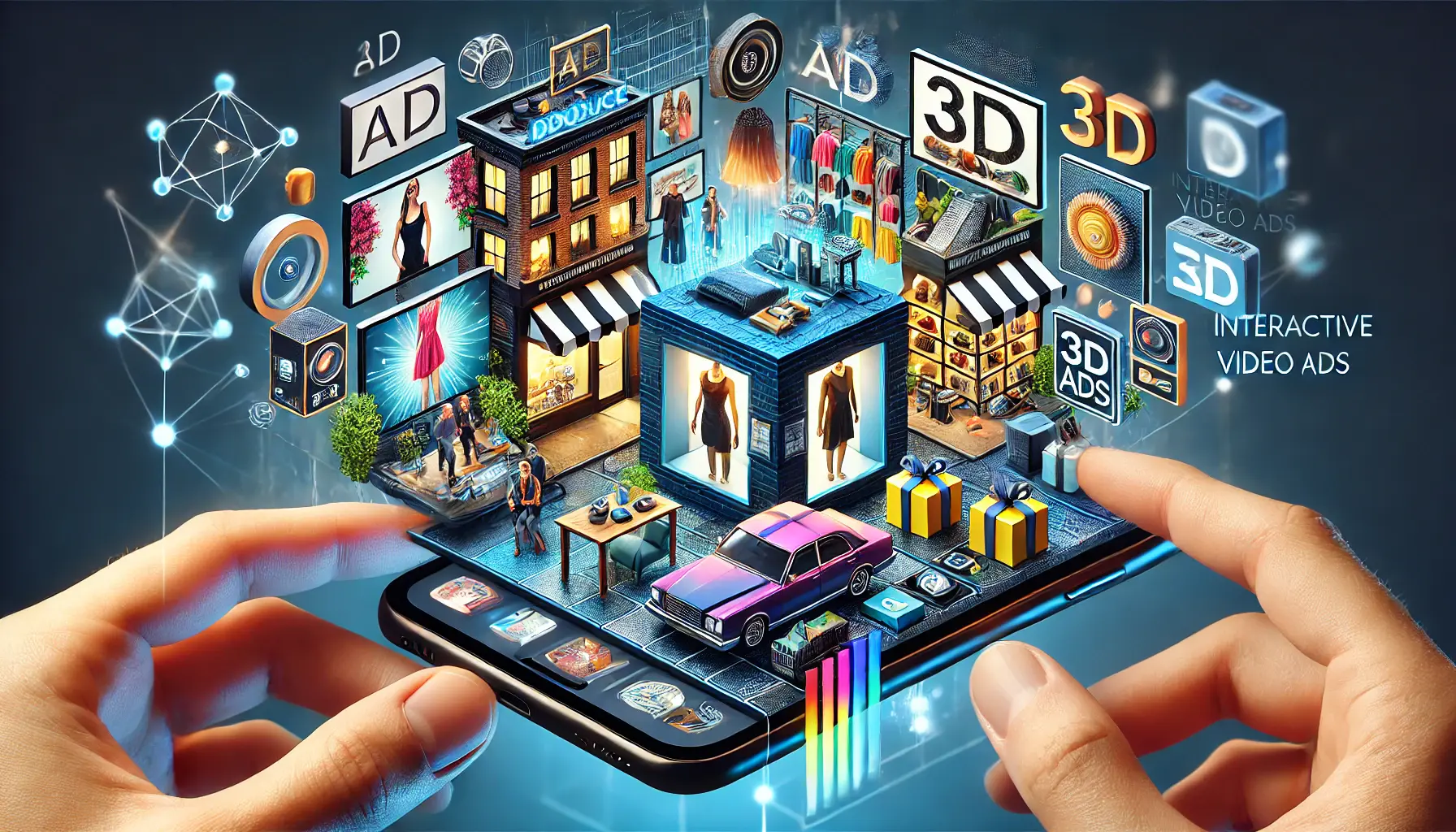
Highlighting Immersive and Visual Ad Formats in Digital Advertising.
Immersive and Visual Ad Formats
In 2024, we are seeing increased use of immersive ad formats like virtual try-ons, 3D ads, and interactive shopping, where users can interact directly with products within the ad.
These innovations are reshaping how users engage with ads and provide more confidence in purchase decisions without needing to physically see the product.
Video ad formats will also grow in importance, with platforms like YouTube Shorts experiencing massive growth.
AI-powered tools can automatically create and optimize video ads that resonate with users, driving higher engagement and conversion rates.
As AI continues to evolve, it is clear that the future of Google Ads will feature more sophisticated, personalized, and interactive ad experiences crafted to meet each user’s unique needs.
AI will continue to drive innovation, improving personalization, automation, and immersive ad experiences in Google Ads.
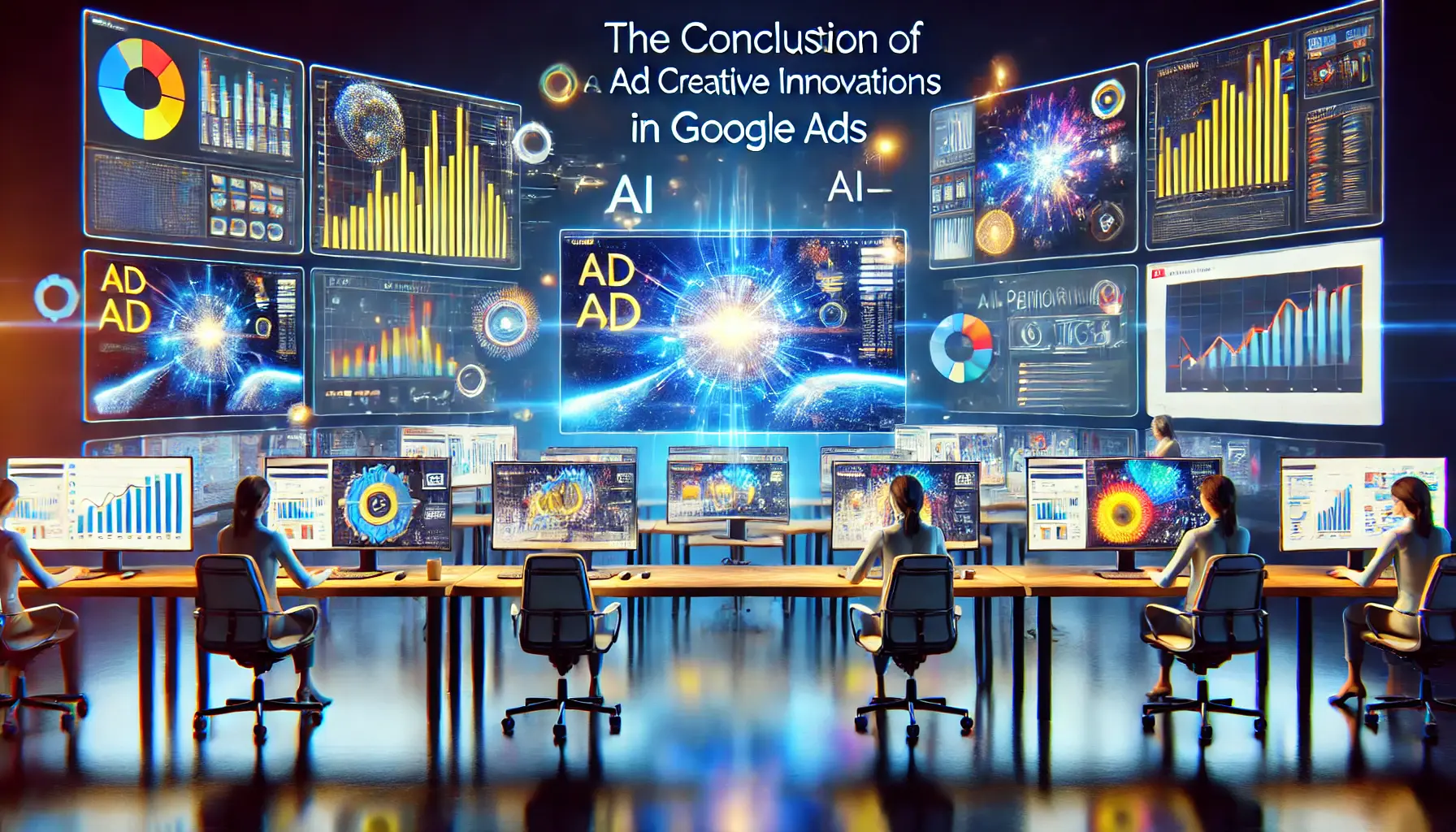
Unlocking the Power of Ad Creative Innovations in Google Ads.
Conclusion: Unlock the Power of Ad Creative Innovations in Google Ads
Digital marketing is constantly evolving, and ad creative plays an even more integral role in Google Ads.
Innovations in artificial intelligence and automation are revolutionizing how businesses reach their target audiences in 2024.
These advancements are helping marketers create more impactful ad experiences through personalization and engagement.
Success in this landscape will depend on understanding and embracing these trends while aligning ad creatives with user behavior and preferences.
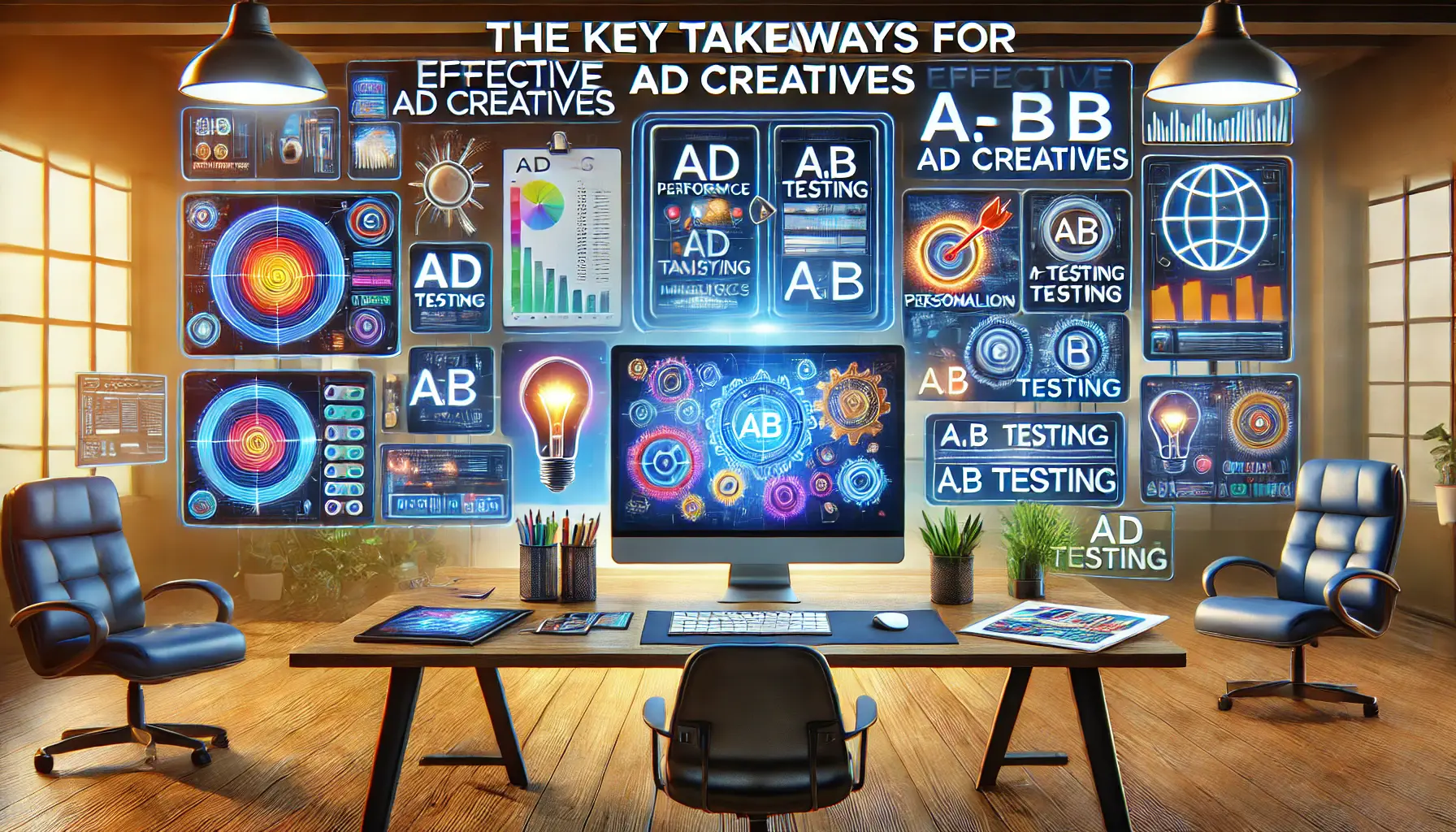
Highlighting Key Takeaways for Creating Effective Ad Creatives in Digital Advertising.
Key Takeaways for Effective Ad Creatives
- AI-driven personalization: AI-powered tools are revolutionizing ad creation and optimization by enabling businesses to deliver highly relevant, personalized content at scale.
- Immersive ad formats: Interactive experiences, such as Virtual Try-Ons and 3D ads, empower users to make more confident purchase decisions and transform the way they interact with ads.
- Data-driven optimization: AI and machine learning continuously optimize ad campaigns in real-time, ensuring ads perform at their best by automatically adjusting bids, creatives, and placements.
- A/B Testing: Testing different ad variations improves ad performance. Google’s Responsive Search Ads (RSA) makes it easier to test and optimize multiple creative elements like headlines and images.
- Attention-Grabbing Visuals: High-quality, uncluttered visuals paired with concise, impactful headlines are critical for capturing user attention and improving conversion rates.
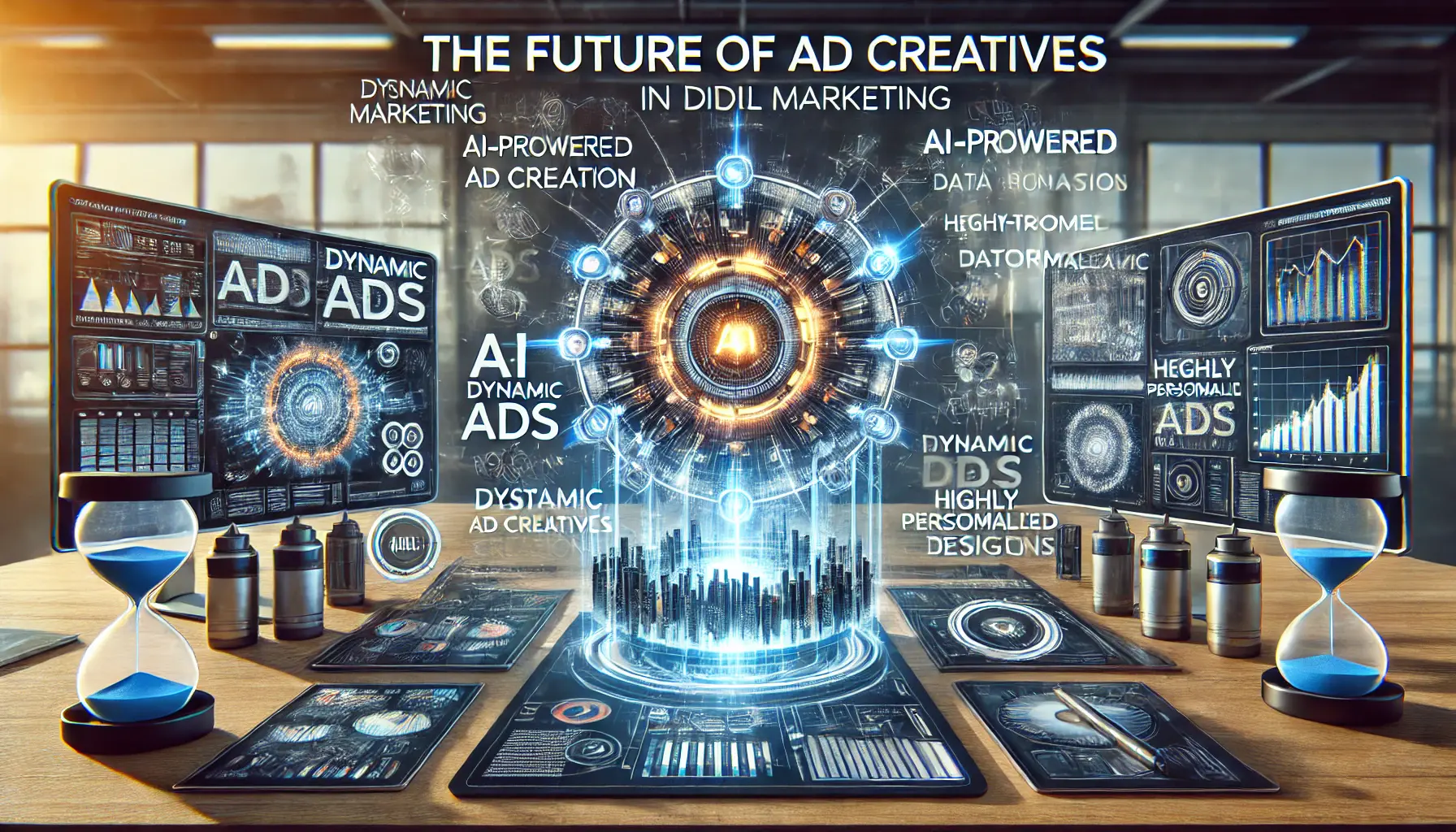
Envisioning the Future of Ad Creatives in Digital Marketing.
Looking Ahead: The Future of Ad Creatives
As we move further into the AI-driven era of digital advertising, businesses must stay ahead by embracing these trends.
AI will continue to play a critical role in automating and optimizing ad creatives, driving greater personalization and immersive experiences.
As tools become more sophisticated, the future of ad creative in Google Ads will focus on engaging users in innovative and meaningful ways, ultimately driving better business outcomes.
In conclusion, businesses that adopt AI-driven strategies in their ad creative development will gain a significant competitive advantage in the digital marketplace.
By following these best practices and staying informed about emerging trends, businesses will be able to transform ad creatives from merely capturing attention to converting that attention into meaningful results.
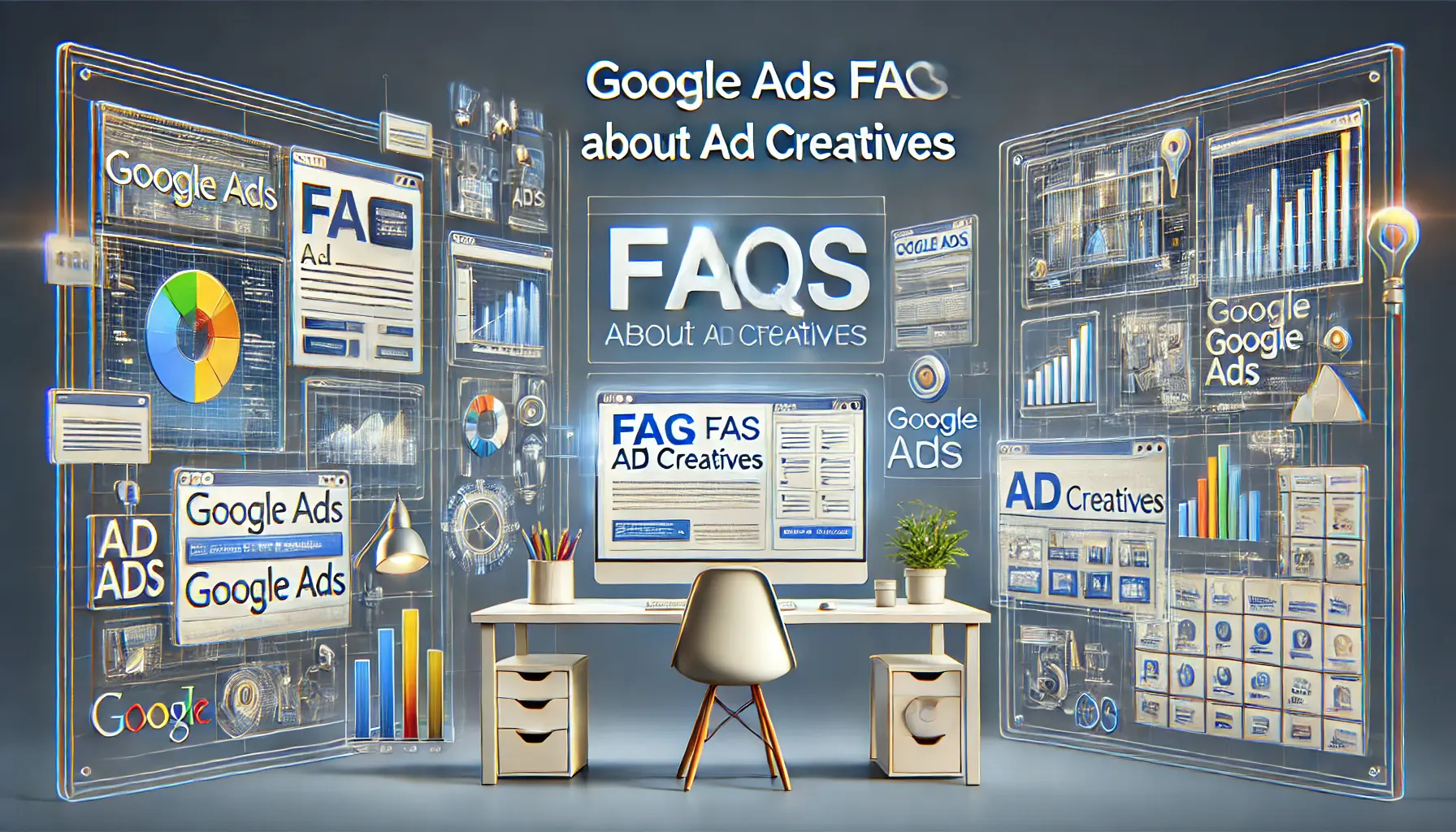
Answering FAQs About Ad Creatives in Google Ads.
Your campaigns can be managed by an agency specialized in Google Ads, check out our service page.
Google Ads: Frequently Asked Questions About Ad Creatives
With the constant evolution of Google Ads, many businesses are eager to leverage their ad creatives for better results.
Below are some of the most frequently asked questions and their answers.
Create effective ad creatives by focusing on clear, concise headlines, high-quality visuals, and relevant calls-to-action (CTAs).
Test multiple variations using tools like Responsive Search Ads to continuously optimize performance and engagement.
Responsive Search Ads allow you to input multiple headlines and descriptions.
Google automatically tests combinations to show the best-performing variations to your target audience, improving engagement and conversion rates.
AI helps personalize ad creatives by analyzing user behavior and preferences.
It automates testing and optimization, ensuring that ads are tailored to the audience for better engagement and ROI.
Engaging ad formats, like 3D ads and virtual try-ons, allow users to interact with products directly within the ad.
These formats enhance user confidence in purchases, improve engagement, and increase ad effectiveness.
